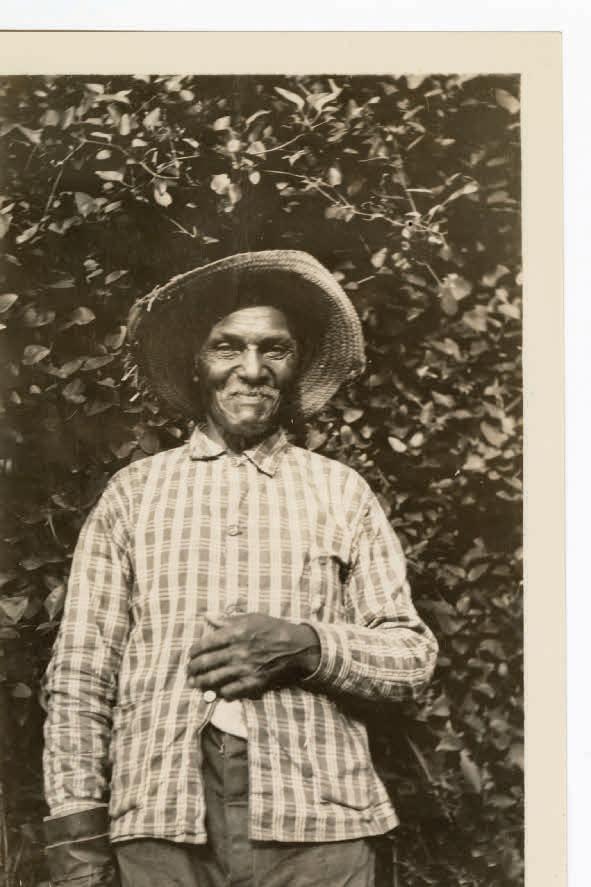


MAGAZINE JANUARY & FEBRUARY 2023 THE GIST SETTLEMENTS From Virginia to Freedom Page 24 NEW TEACHING TOOL Ohio American Indian Sites Virtual Quest Page 34 LAWYER OF THE HOUSE Samuel Shellabarger and Reconstruction Page 40
Gras
North Page 28
KING WAMBA CARNIVAL Toledo’s Mardi
of the
Donna DeBlasio
Youngstown State University
Nishani Frazier Miami University
Robert Genheimer
Cincinnati Museum Center
Stephen George Ohio History Connection
Alex Hastie Ohio v. the World
George Ironstrack Miami University
Chester Pach Ohio University Roger Pickenpaugh Historian and Author
Daniel Rivers
The Ohio State University
Truda Shinker Ohio History Connection
Echoes Magazine (ISSN 0012-933X ) is published bimonthly and distributed by the Ohio History Connection as a benefit of Ohio History Connection membership.
Editorial Offices: Ohio History Connection, Ohio History Center, 800 E. 17th Ave., Columbus, OH 43211-2474 Phone 844.836.0012
Email echoes@ohiohistory. org

Postmaster: Please send address changes to: Echoes Magazine, Ohio History Connection, Ohio History Center, 800 E. 17th Ave., Columbus, OH 43211-2474

Entire contents © 2023 by the Ohio History Connection. All rights reserved. Nothing may be reprinted or electronically reproduced in whole or in part without written permission from the publisher. The Ohio History Connection accepts no responsibility for facts and opinions expressed by the authors.
The Ohio History Connection is a
2 Echoes | JANUARY & FEBRUARY
Contents
ISSUE Contents From Our Editors What’s
Story? In the News From
Historic
& Museums At
Online Events Featured Events & Exhibits I Wish
Been There Young
the Past Reviews
Tom Wolf CONTRIBUTORS Jennifer
Conn Ellie Dew Erin Esmont Tom Harms Jillian Nelson Neil Snarr Tom Stafford
2023
JANUARY & FEBRUARY 2023 From Virginia to Freedom—The Gist Settlements Mardi Gras of the North— Toledo’s King Wamba Carnival American Indian Sites in Ohio— The Ohio History Connection’s New Virtual Field Trip Lawyer of the House— Samuel Shellabarger and Reconstruction IN EACH
Your
Our Director
Sites
the Ohio History Center & Ohio Village
I’d
Eyes on
Cover: These photos taken in the 1920s picture some of the Highland County descendants of people who had been enslaved on Samuel Gist's Virginia plantations and who were freed and resettled in Ohio after he died in 1815. Ohio History Connection Archival Collections Vol. 62, No. 1 EDITORS Bill Eichenberger
Boresz Engelking Jonas
ADVISORY BOARD
MAGAZINE 24 28 34 40 2 4 4 6 7 15 16 20 21 46 48 50 Moving? Contact us
or
to
your
THANKS TO OUR OHIO HISTORY CONNECTION STRATEGIC PARTNERS:
@OhioHistory
at membership@ohiohistory.org
800.686.1545
share
new address.
Like us on Facebook, and follow us on Instagram, Twitter and TikTok at
34
From Virginia to Freedom
THE GIST SETTLEMENTS
Samuel Gist provided for hundreds of people enslaved on his Virginia plantations to be freed after he died in 1815. He’d envisioned that they’d live on his land in the Old Dominion, but there was one hitch he hadn’t anticipated: Virginia law forced freed people who stayed in the state more than one year back into slavery. Instead, his trustee arranged for them to settle in Ohio.
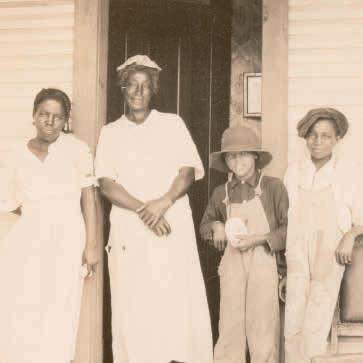
Mardi Gras of the North
TOLEDO’S KING WAMBA CARNIVAL
Inspired by the Mardi Gras traditions of New Orleans, Mobile and elsewhere, Toledo pulled out all the stops for its King Wamba Carnival, an August 1909 wingding touted as “the Mardi Gras of the North.” King Wamba and Queen Sancha arrived by royal barge on the Maumee River to preside over six days of parades, parties and masked revelry unequaled in Toledo before or since.
American Indian Sites in Ohio
THE OHIO HISTORY CONNECTION’S NEW VIRTUAL FIELD TRIP
The Ohio History Connection has created a new online field trip to American Indian Sites in Ohio for use in classrooms statewide. Developed in collaboration with partners from tribes that have historical ties to Ohio, it shares Native perspectives on our state’s American Indian history. Author Erin Esmont talks with Teresa Valencia, who directed the development of this new resource for teaching Ohio history.
Lawyer of the House
SAMUEL SHELLABARGER AND RECONSTRUCTION
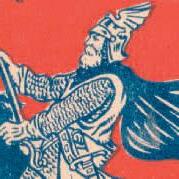

As a member of Congress in the 1860s and 1870s, Rep. Samuel Shellabarger of Springfield foresaw with anguished apprehension the coming suppression of the Black vote that would pave the way for the violence and oppression of the Jim Crow South. Author Tom Stafford recounts Shellabarger’s experience as shared by historian Bill Kinnison in the new biography Samuel Shellabarger’s Civil War, 1817–1896.
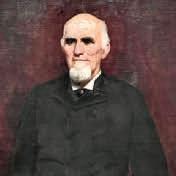
OHIOHISTORY.ORG 3
24
40
28
FROM OUR EDITORS
History is just one gigantic rabbit hole.
You start snooping around for information about the little-known Ohio politician Samuel Shellabarger (see story, page 40) and the next thing you know, you’re changing your forgotten password at the library in order to access said politician’s most important speeches online.
After we got our password figured out, we dove into Shellabarger’s speeches—his most significant achievement was writing the Civil Rights Act of 1871—and found one from earlier in his political career on Reconstruction, which he delivered to Congress in 1866.
In it, Shellabarger takes up the question, “What is a state?” and asks, “If a state secedes from the Union, what happens to its constitution upon its return to the fold?” First, he quotes the martyred president, Abraham Lincoln, who argued, “No state can be regarded as thoroughly organized which has not adopted irreversible guarantees for the rights of the freedmen.”
To which Shellabarger adds, rousingly, “Let this noble utterance— ‘irreversible guarantees for the rights’ of Americans of every race and condition—be written with pen of iron and point of diamond in your constitution.
“Let the revolted States base their republican State governments upon a general and sincere loyalty of the people.”
Short of that, Shellabarger concluded, “If you ask again, ‘Suppose such general loyalty shall never reappear, shall they be dependencies forever?’ Sir, convince me that the case is supposable, then with deepest sorrow I answer—FOREVER!”
On a lighter note, did you know that Toledo once aspired—in 1909—to become known for the Mardi Gras of the North? (See story, page 28.)
With that goal in mind, the city and its local businesses put on, for a week in August of that year, the King Wamba Carnival, which was planned as an annual event that could bring prestige to Toledo and closer ties to its sister city in Spain. There is no record—at least not one that’s been uncovered yet—of why the carnival was a one-and-done proposition. But Toledo never saw the likes of it again.
Speaking of rabbit holes, we were researching the Ohio History Connection’s most recent “virtual field trip,’’ paid for with a federal GEER grant, on American Indian history in what is now called Ohio.
The Ohio American Indian Virtual Quest was designed for fourth-toeighth graders, but that didn’t stop the Echoes editors from logging on to the website and clicking through every single tribe to learn more about Fort Ancient, Schoenbrunn Village, Fort Recovery, Fort Meigs, Wyandotte Mill, the Johnston Farm & Indian Agency and the Newark Earthworks. Sometimes you hadn't even known about the hole, let alone ever gone down it. But in 1819, the first of three waves of enslaved African Americans were manumitted by their owner, Virginian Samuel Gist, and moved to southwest Ohio. Fascinating stuff. And we learned a new word: manumission, the archaic cousin of emancipation.
What ’s
In every issue of Echoes Magazine, we feature the stories of Ohio History Connection members and other Ohioans to stoke memories and shed light on our shared past.
“
For this issue, we asked, Do you ever go ice fishing? Where do you go? What do you catch? ”
Here are some of your responses:
INDIAN LAKE
I started ice fishing while in college 25 years ago, but it has become a big part of my life over the last few years. I have fished all my life, but ice fishing is by far the most rewarding. I feel a true sense of accomplishment when I successfully locate the fish and then figure out what it is they want to eat. Also, being mindful of ice safety and ice conditions adds a little adventure
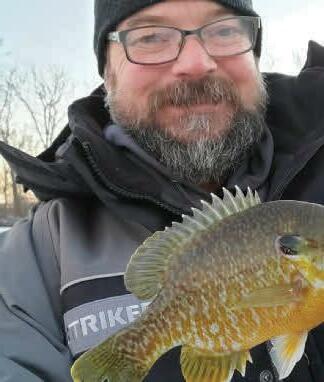
4 Echoes | JANUARY & FEBRUARY 2023
Ice fisherman Bill Baum poses with his freshly caught green sunfish.
Your Story?
to every trip. My favorite local place to fish is Indian Lake. Indian Lake is an outstanding fishery in the central Ohio area and it tends to build ice quickly due to it being generally shallow. I also enjoy East Harbor on Lake Erie, as it has great opportunities for ice fishing as well. Crappie and bluegills are some of my favorites, but I also target walleye, perch and northern pike.
 —Bill Baum, Milford Center
—Bill Baum, Milford Center
NIMISILA RESERVOIR
I try to get out on the ice as much as conditions allow. Some years allow for weeks of ice fishing in Ohio, while other years just don’t make good ice. I mainly ice fish inland reservoirs in northeastern Ohio, and I’d say my favorite spot is Nimisila Reservoir in Summit County. It is practically in my backyard, making it very convenient to fish. When I’m on the ice, I target panfish as well as species like crappie, bluegill, redear and perch. I enjoy turning my catch into delicious meals for family and friends. (I believe the ice-cold water takes the taste and quality of the fish to an even better level.) When I am ice fishing, I am usually out there with family and friends.
ICE FISHING
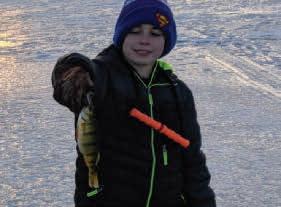

I really enjoy the social component. We often cook meals on a camping grill, share stories, talk about life and do a whole lot of laughing. The other aspect I love about ice fishing is the access to the whole lake for all. During soft water season, much of the lake is only accessible by boat. Hard water (ice fishing) season allows everyone to access the whole lake.
—Ken Fry, Jackson Township, Stark County
ANYWHERE I CAN
Ice fishing is absolutely my favorite winter hobby! And I’ll go ice fishing anywhere I can find active fish. Some of my favorite bodies of water in Ohio are Lake Erie, Buckeye Lake, Indian Lake, Grand Lake St. Marys, Cowan Lake, C.J. Brown Reservoir as well as any of the smaller bodies of water in northeast Ohio. (Outside Ohio, Saginaw Bay on the east side of Lake Huron is fantastic.) Everything I catch during soft water season I can catch through the ice. My personal favorites are perch, walleye, northern pike, bluegill and crappie. What do I love about ice fishing? The peaceful sounds of walking on ice and the crisp smell of fresh air mixed with the beauty of a snowy winter land. Other things I really enjoy about ice fishing are the simplicity, and the social aspect of friends gathering and having a great time outdoors. Also, animals are far more active in the winter than most believe and being outside to watch them has always fascinated me.

—Chris Mangen, Xenia
WHAT’S YOUR STORY?
We want to know your stories, so in every issue of Echoes Magazine we ask you a question, then run selected answers in the following issue. Here’s the question for March & April:
Who’s the most notorious character to come out of your community, or who passed through it? A gangster? A bank robber? A serial killer? A con artist? A corrupt politician? How did you first hear about the person? What did they do to live on in local memory?
Email your story responses (50 to 150 words) by Jan. 10 to echoes@ohiohistory.org or, if you follow us on Facebook, send us a Facebook message.
OHIOHISTORY.ORG 5
Bill Baum’s bluegill is ready for its closeup.
Chris Mangen
Ken Fry’s son, Aidan Raus
In the News
COLLECTIONS
Collections Care Center
Under Construction
The Ohio History Connection has broken ground on a new Collections Care Center now under construction at the northeast end of the Ohio History Center campus in Columbus, between I-71 and Ohio Village.


When completed in 2024, the facility will house state-of-the-art care and storage facilities for natural history collections and part of our history collections, along with offices and workspace for curators, collections managers and registrars. A future second phase will house archaeology collections and the remaining history collections, now in off-site storage.
The Ohio History Connection cares for more than 1.8 million objects
large and small, among them American Indian artifacts, artworks, furniture, clothing and natural history specimens. The new facility will provide high-quality storage and care for pieces such as a chair made about 1860 that Gen. Ulysses S. Grant used in his Virginia campaign during the Civil War; the Williams Mastodon; a quilt made by Phebe Cook of Morrow County in 1872; and “Buttons,” the last wild passenger pigeon, who died in 1900.
As with many museums, only a small percentage of our collection is on exhibit at any time. When not on display, pieces are stored in our collections facility, where they’re available for research by our staff and the public. The current facility, a complex of repurposed warehouse buildings, is less than
ideal for storing museum collections. The new climate- and humiditycontrolled Collections Care Center will have 16,500 square feet of storage space and 12,800 square feet of offices and workspace.
Planning for the new facility officially began in 2018 with Ohio House Bill 529 and the original budget appropriation of $15 million. The total capital appropriation from the State of Ohio for the facility is $17 million.
WATCH
Use your phone to scan this QR code to view a short video about the groundbreaking.
Left: Collections Care Center groundbreaking on October 13. From left, Charles R. Moses, Ohio History Connection board president; Megan Wood, Ohio History Connection executive director & CEO; Kimberly Murnieks, director of the Ohio Office of Budget and Management; Cheryl Lyman, director of the Ohio Facilities Construction Commission; and Burt Logan, retiring Ohio History Connection executive director & CEO and executive consultant to the board of trustees. Above: Artist’s rendering of the new Collections Care Center at the north end of the north parking lot on the Ohio History Center & Ohio Village campus in Columbus. In this view looking northeast from the Ohio History Center, Ohio Village is at left and I-71 is at top right.
6 Echoes | JANUARY & FEBRUARY 2023
DesignGroup
OCTAGON EARTHWORKS Ohio Supreme Court Rules in Favor of Ohio History Connection
The Ohio Supreme Court has upheld two lower courts’ decisions in favor of the Ohio History Connection’s efforts to acquire the Octagon Earthworks lease from Moundbuilders Country Club in Newark.
The court ruled that the Ohio History Connection made a goodfaith offer to acquire the Octagon Earthworks lease from the country club after the property initially was appraised, and that the acquisition is necessary and for a public use.
The decision upheld Ohio’s Fifth District Court of Appeals’ January 2020 ruling, which unanimously affirmed Licking County Common Pleas Judge David Branstool’s May 2019 ruling that the Ohio History Connection has the authority to acquire the lease and that the acquisition is both necessary and for a public use.
Built between 1 and 400 A.D., the 50-acre Octagon Earthworks was part of a 4-square-mile complex now known as the Newark Earthworks. The Octagon is aligned to the four moonrises and moonsets that mark a complicated 18.6-yearlong lunar cycle.
The Ohio History Connection owns the site and leases it to Moundbuilders Country Club. The Ohio History Connection is allowed four full-access days annually for public visitation.
After several years of negotiations to buy out the lease, which would expire in 2078, the Ohio History Connection concluded the only option was to acquire the lease while ensuring the country club receives just compensation for the value of the lease.
A jury trial will determine the value of the lease. To learn more about the Octagon Earthworks, visit ohiohistory.org/octagonruling
FROM OUR DIRECTOR
This fall, my family had the good fortune to spend a weekend in northeast Ohio, mixing a bit of work with a bit of adventure and history.
We started by visiting an Ohio Historical Marker in Huron’s Oak Bluff Cemetery, a small and very historic cemetery overlooking the lake. It shares two stories: Almon Ruggles, Surveyor of the Firelands and The Unknown Sailor and the Battle of Lake Erie.
In 1805, Ruggles led a survey team into the Firelands region of the Connecticut Western Reserve, later settling in the area, where he witnessed the Battle of Lake Erie and is said to have discovered the remains of an unknown sailor who’s buried in the cemetery.
Being on the shores of Lake Erie is restorative, even on blustery fall days, so we also visited Old Woman Creek State Nature Preserve. At its lake access, you can stand on the beach between the waters of Lake Erie and Old Woman Creek, which combine to make one of Ohio’s few remaining natural estuaries. Run by our friends at the Ohio Department of Natural Resources, it includes lakefront property, trails and a visitor center. It was manageable with a 6-year-old and an 11-year-old, though both wanted to use the stand binoculars at the overlook at the same time, so we used our powers of negotiation.
Driving on to Cleveland, we visited the Rock & Roll Hall of Fame and walked to Voinovich Bicentennial Park at the north end of the East Ninth Street Pier. While the Hall of Fame visit wasn’t part of my official duties, I was enamored of the hall’s Beatles exhibit, explaining the significance of their London rooftop concert to my daughter. We could have spent many more days visiting the nearby Great Lakes Science Center, USS COD and International Women’s Air & Space Museum, so we’ll be back. We ended our evening dining in the Ohio City neighborhood.
The next day took us on a fun adventure at Cuyahoga Valley National Park. We visited the Canal Exploration Center, with some really fun and interactive elements and helpful park rangers. We hiked to Brandywine Falls, grabbed some snacks at the Boston Store and ended with a hike at The Ledges, a beautiful and unique landscape with trails for lots of ability levels.
At the Ohio History Connection, we’re privileged to work in a state with so many incredible artistic, historic and cultural resources. As you think about what’s valuable to you this year, I invite you to join me as a supporter of the Ohio History Connection. Visit a site, give a gift membership or donate by visiting ohiohistory.org . More adventures ahead in 2023!
Megan Wood | Executive Director & CEO, Ohio History Connection

OHIOHISTORY.ORG 7
THE NEXT 10 YEARS Ohio History Center & Ohio Village
by Jen Cassidy, Division Director
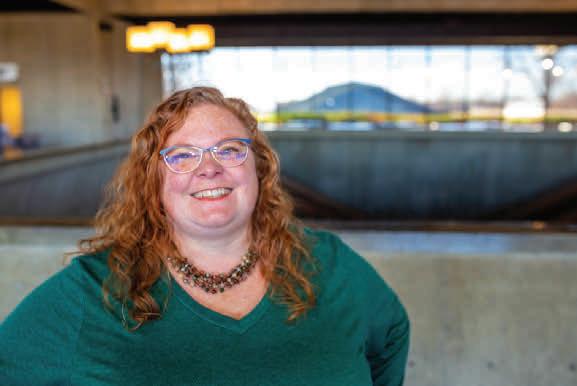
Welcome to 2023! I’m pleased to write this column at the start of a new year, while the group I lead is taking a deep collective breath after hosting more than 60,000 visitors last year. After a brief rest, we’re jumping into creating many more amazing experiences for you when you visit this year.
Our Ohio History Center & Ohio Village team is responsible for the daily operations and experiences that happen on our Columbus campus, supporting members, visitors and onsite staff of the Ohio History Connection. I feel lucky to have the opportunity to lead a team of dedicated and talented museum, living-history, event and operations professionals. As we’ve navigated creating engaging and safe experiences for you during the past three years, we’ve also been working on what’s next for the Ohio History Center & Ohio Village that aligns with our Ohio History Connection strategic priorities: sustainability, equity and relationship building.
OHIO VILLAGE
In 2020 and 2021, we began reenvisioning what you experience when you visit Ohio Village. A group of staff and advisors considered questions such as:
• How do we tell stories that spark curiosity and connect visitors?
• How do we share stories that have been hidden or untold?
• How do we create experiences that offer multiple levels of engagement, from fun memories to civil discourse about true challenges that people in Ohio’s past endured?
• How do we keep our current visitors engaged, build relationships with new audiences and offer deeper connections to Ohio history?
Based on results from our annual survey of stakeholders, in 2021 we invested in more first-person presenters to interact with you when you visit. We introduced some new village “residents” who share stories of struggles and success from the experiences of Black and immigrant Ohioans in the 1890s. We made changes in village businesses and improved modern-day conveniences.
Last fall, we began an Ohio Village master planning project with the firm AECOM, looking at the village infrastructure, buildings, land use and experience, and considering needed investments. Watch for updates as we move toward 2024, when Ohio Village celebrates its 50th anniversary. Together with the community, we want to create an engaging and sustainable Ohio Village for the next generation.
OHIO HISTORY CENTER
With our new Collections Care Center under construction (see page 6), we’re continuing to reimagine what you experience when you visit the Ohio History Center & Ohio Village campus and how that will evolve over the next decade and beyond. We’re
dedicated to sharing the history of Ohio through stories that reflect the diversity of places in our state and the people who call, or have called, themselves Ohioans. We hope you, our community and stakeholders, will join us to create the best future for our campus as we place sustainability, equity and relationship-building at the forefront of our work.
I know I speak for my whole team when I say we look forward to the work ahead and to welcoming you on your next visit to the Ohio History Center & Ohio Village. We hope to see you soon!
Attention snowbirds! Show your Ohio History Connection membership card to enjoy admission discounts at museums in the national Time Travelers network—10 in Arizona, 10 in Georgia, 31 in Florida—and more!
8 Echoes | JANUARY & FEBRUARY 2023
Jen Cassidy is director of the Ohio History Center & Ohio Village for the Ohio History Connection.
ON EXHIBIT
Art of Soul!
The Ohio History Connection’s National Afro-American Museum & Cultural Center in Wilberforce presents its ninth annual Art of Soul! Juried Art Show, open now through Saturday, Feb. 25. Twenty-nine artists from across the United States are exhibiting 43 artworks in response to the theme of Black Love. The artwork represents themes and perspectives related to the African diaspora and African American culture and history.
NATIONALLY KNOWN JURY
A nationally known panel of art educators and artists reviewed all entries and selected the artwork featured in this year’s show. They include Dr. James Haywood Rolling Jr., chair of the art education programs at Syracuse University; Renee Wormack-Keels, a Columbus fiber and mixed media artist who uses materials, threads, fibers and other mediums to create beautiful social, historical and memorial quilts; and Marshall Shorts, an awardwinning artist, designer, brand specialist, community organizer and entrepreneur.
AWARDS CEREMONY FEB. 25
Participating artists and winners will be recognized at a closing reception and awards ceremony at the National Afro-American Museum & Cultural Center on

Saturday, Feb. 25, at 1 p.m. The exhibit and the reception and awards ceremony are included with museum admission. Ohio History Connection members enjoy free admission to the museum and the reception and awards ceremony. For more information, call 800.752.2603
HAYES MUSEUM
Ohio Women Vote
Ohio Women Vote—100 Years of Change, a special traveling exhibit created by the Ohio History Connection and League of Women Voters, is on display at Hayes Presidential Library & Museums in Fremont through Tuesday, Jan. 31. Sponsored by Ohio Humanities, it examines women who fought for the right to vote and women who’ve continued that activism through the years since.
The exhibit covers why voting is important, the power that comes with it, how women have spoken out through the generations, what issues they’ve advocated for, and their advice to women of the future.
Included with museum admission, it’s on display in the Hayes Museum. Ohio History Connection members enjoy free admission. Hayes Presidential Library & Museums is at the corner of Hayes and Buckland avenues in Fremont. For more information, call 800.998.7737 or visit rbhayes.org
Central Ohioans can see the exhibit at the Ohio History Center in Columbus, where it’s also on display through Jan. 22. Call 800.686.6124 or visit ohiohistory.org
OHIO HISTORY DAY
Call for Judges
Calling all educators, historians, museum professionals and anyone with a love of history! We need your help to ensure that this year’s Ohio History Day is a huge success for the thousands of students in grades 4–12 who take part in regional and state competitions. This year, all contests will take place in person, on Saturdays from Feb. 25 through April 1. We’re looking for more than 500 judges, and we hope you’ll be one. Visit ohiohistory.org/historyday and scroll down to “Judges” to find a contest in your vicinity and register. Questions? Email historyday@ohiohistory.org
OHIOHISTORY.ORG 9
Aminah’s World, Deb Baillieul
National Afro-American Museum & Cultural Center
Many of our outdoor sites are open yearround and great for winter walks and hikes!
DONOR SPOTLIGHT
Todd and Becky Stephenson
The Stephenson family settled in Ohio in the early 1800s, about four miles west of Fort Ancient in Warren County. Today, 200 years later, Todd and Becky Stephenson are working to preserve the history of that area.
Todd and Becky’s support of historic preservation and education throughout Ohio has spanned many years. Todd’s 36-year geology career and family ties to Fort Ancient led him to begin volunteering there upon retirement in 2015, and Becky’s passion for genealogy makes this project a natural fit. The couple were instrumental in establishing a fund to digitize the area’s newspaper, The Western Star.
CREATED ENDOWMENT
Most recently, Todd and Becky’s collective experience led them to create the Ohio Earthworks Discovery Research Endowment Fund for support of archaeological research at Ohio’s Ancient American Indian Earthworks and Earthwork-related sites. The endowment supports research to further our understanding of the ancient earthworks and the American Indian people who built them, fosters collaboration with American Indian tribes, encourages interdisciplinary research between scientific disciplines and provides opportunities for training the next generation of archaeologists.
BOOTS ON THE GROUND
This endowment is unique because it supports both research and applied learning, giving students handson experience in the field. “Boots on the ground—that is the best education you can have. We wanted to be able to provide some of that for students,” Becky says. The focus is not just on the research itself, but testing and applying that work to make it meaningful. Todd stresses that sharing the work with the Ohio History Connection, Native American tribes and the public provides valuable education and insights, and is integral to the purpose of the endowment. Through this gift, the Stephensons’ hope is that these archaeological gems throughout the state can be further understood and preserved for generations to come.
LEARN MORE
Would you like to learn more about endowments and leaving a legacy at the Ohio History Connection? Contact Paulene Wilson of our development office at pwilson@ohiohistory. org . Perhaps you’re interested in supporting the Stephensons’ endowment? Give at ohiohistory. org/earthworksendowment

ALL HANDS ON DECK!
Tax Time = History Fund Time
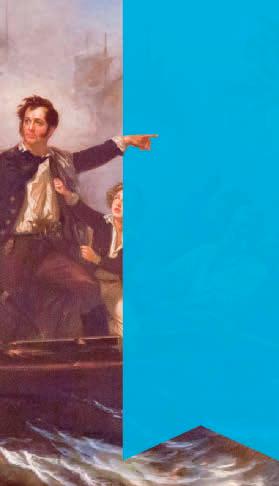
Since 2012, the Ohio History Connection has awarded more than $1 million in Ohio History Fund grants to aid projects by Ohio’s local history-and-heritage organizations. The grants are made possible by generous contributions from Ohioans like you who make gifts to the Ohio History Fund from their annual state income tax refund. With tax time here, it’s time for us to ask you once again to consider a gift to the Ohio History Fund when you complete your Ohio personal income tax return. No gift is too small. Though the average annual
gift is $12, that $12 in combination with many similar gifts has had a $1 million+ impact on preservation of our state’s history and historic places to date.
LINE 26
In completing your 2022 Ohio personal income tax form, please consider a gift to the Ohio History Fund on line 26, or ask your tax preparer to include one.
Questions? Visit ohiohistory.org/ historyfund. The Ohio History Fund is a result of the collective efforts of the Ohio History Connection and nine partner organizations: Heritage Ohio, the Ohio Academy of History, the Ohio Archaeological Council, Ohio Council for Social Studies, Ohio Genealogical Society, Ohio Historical Records Advisory Board, Ohio Local History Alliance, Preservation Ohio and the Society of Ohio Archivists.
10 Echoes | JANUARY & FEBRUARY 2023
An easy way to support your community! Your donation funds local history grants in
GIVE TO THE Ohio History Fund ON YOUR State Tax Return. Credit: Capitol Square Review & Advisory Board and Garth’s Auctioneers & Appraisers, Inc.
Becky and Todd Stephenson
All hands on deck!
Ohio. ohiohistory.org/OHFund
Commodore Oliver Perry featured in Perry’s Victory, painted by William Powell of Cincinnati
FIVE RECIPIENTS HONORED State Historic Preservation Office Awards

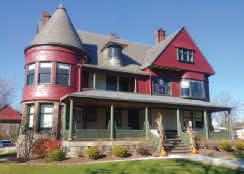
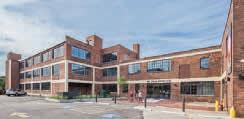
Five outstanding achievements in historic preservation were recently honored with the Ohio History Connection’s State Historic Preservation Office Awards. State Historic Preservation Officer Burt Logan presented the awards at an Oct. 29 luncheon at the Ohio History Center in Columbus.
Each year since 1984, the Ohio History Connection’s State Historic Preservation Office has recognized achievements in historic preservation by presenting awards in two categories: Public Education and Awareness, and Preservation Merit.
PUBLIC EDUCATION AND AWARENESS AWARD
The Public Education and Awareness Award is for increasing interest in historic preservation. Eligible activities include, but are not limited to, media, newsletters, publications, interpretation, original research, educational programs and special events that have substantially increased public understanding and awareness of historic preservation at the local, regional or state level. The 2022 recipient is:
Dublin: The City of Dublin and McBride Dale Clarion for the Dublin Historic Design Guidelines.
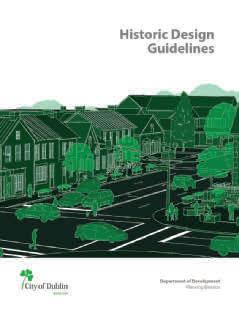
PRESERVATION MERIT AWARD
The Preservation Merit Award is for preserving Ohio’s prehistory, history, architecture or culture. Eligible activities include, but are not limited to, restoring, rehabilitating or otherwise preserving an important building or site; longtime stewardship of a property; promoting protective legislation; funding preservation projects; offering leadership, support or service; and furthering preservation at the local, regional or state level. The 2022 recipients are:
Cleveland: Foran Group Development LLC, City Architecture, Studio Lyon Szot and Judith B. Williams, Historic Preservation Consultant, for rehabilitation of the Astrup Company Building at 2937 W. 25th St. in Cleveland as the Pivot Center for the Arts. The project was undertaken using state and federal tax credits for historic preservation, which are administered by the Ohio History Connection’s State Historic Preservation Office and the Ohio Development Services Agency.
Fairport Harbor: Sheila Consaul, Phil Van Tilburg, Positive Energy Electrical, O’Connor Plumbing and Rusty Dodge for the preservation and rehabilitation of the Fairport Harbor West Breakwater Light.

Medina: The Medina County Historical Society for preservation and rehabilitation of the McDowellPhillips House at 205 S. Prospect in Medina.
Columbus: Kelley Companies; Flat Black Commercial Visuals; Judith B. Williams, historic preservation consultant; and Schooley Caldwell for rehabilitation of the Open Air School at 2571 Neil Ave. in Columbus. The project was undertaken using state and federal tax credits for historic preservation.
Learn more about this year’s recipients and explore past State Historic Preservation Office Award recipients at ohiohistory.org/ hpawards
Email us at if your email address changes and we’ll send you a link to sign up again for our eNews email newsletter!
OHIOHISTORY.ORG 11
Dublin Historic Design Guidelines
Open Air School, Columbus
Astrup Company Building, Cleveland
West Breakwater Light, Fairport Harbor
McDowell-Phillips House, Medina
All photos courtesy State Historic Preservation Office
HISTORIC PRESERVATION
Recent Ohio
Additions
to the National Register of Historic Places
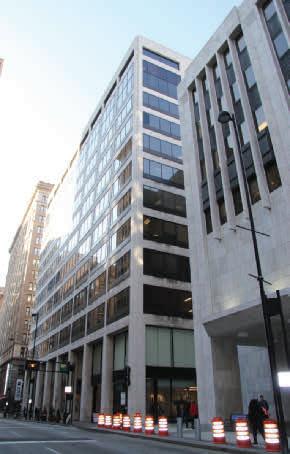
CINCINNATI • HAMILTON COUNTY FORMICA CORPORATION-CRYSTAL ARCADE-CONTEMPORARY ARTS CENTER BUILDING
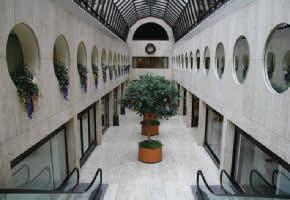
120 E. Fourth St.
Internationally known Chicago architect Harry Weese (1915–1998) designed this mixed-use project completed in 1970 that’s associated with the history of planning and development in Cincinnati. The 13-story tower served as headquarters of the Formica Corporation, with a lobby that links to the two-story, glassroofed Crystal Arcade, part of the city’s skywalk system. On the second floor at
one end of the arcade was the Contemporary Arts Center. Developed by Towne Properties, this project was among the first completed under the 1964 Plan for Downtown Cincinnati prepared by Baltimore urban planning firm Rogers, Taliaferro, Kostritsky & Lamb. The plan guided downtown development for a generation, describing on a blockby-block basis locations for new development, retention of significant older buildings and creation of the enclosed skywalk system.
CINCINNATI • HAMILTON COUNTY
KING RECORDS STUDIO BUILDINGS 1536-1540 Brewster Ave.

This complex housed King Records from 1944 to 1971. Owner Syd Nathan, a Jewish American entrepreneur willing to challenge racial norms of the time, employed African Americans at every level of the company. At King Records, Black and white employees creating music together shaped popular culture through the artistry of performers such as the Delmore Brothers, Hank Ballard, the Stanley Brothers and James Brown. Signing some of the biggest stars in popular music, King Records recorded more than 400 hits in genres such as bluegrass, rhythm and blues, soul, country, polka, jazz, doo-wop, rockabilly and rock and roll. The Rock and Roll Hall of Fame has inducted more than 20 King alumni, including the founder. Syd Nathan died in 1968 and King Records closed in 1971.
COLUMBUS • FRANKLIN COUNTY WEST HIGH SCHOOL 120 S. Central Ave.
Completed in 1908 as West High School, this Neoclassical-style building has been added to the National
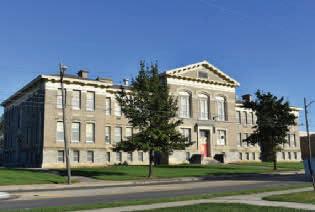
Register for its local architectural significance. David Riebel (1855–1935), who served as the Columbus Public Schools Board of Education’s first architect from 1892 to 1922, designed it during a period of tremendous growth for the school district. Between 1896 and 1908, the district built three high school buildings and enlarged a fourth: East High (1897; demolished); South High (1898; later Barrett Junior High School); a 1900 addition to North High; and West High. When a new West High School opened on West Powell Avenue in 1929, the 1908 West High became Starling Junior High School.
NEW FRANKLIN • SUMMIT COUNTY
MENTZER-SORRICK FARM 365 Center Road
Conrad Mentzer and the Sorrick family came to New Franklin from Pennsylvania, and the buildings on their farm reflect that. The farmstead has examples of two traditional building types common to the Keystone State, both built about 1840: a Pennsylvania Standard Open Forebay Bank Barn and a Four-Over-Four House (four rooms on the first floor, four on the second). A concrete silo, milk house and garage added in 1915 reflect the later availability of improved building materials like concrete and concrete block and the widespread interest at the time in improved sanitary conditions. The farm remained in the Sorrick family until 1939.
NORWALK • HURON COUNTY
NORWALK THEATRE 57 E. Main St.
Designed by the father-and-son architectural firm of John and Drew Eberson, nationally known for theatres, this downtown movie house opened
12 Echoes | JANUARY & FEBRUARY 2023
in 1941. It’s been added to the National Register as an example of the simpler, streamlined Moderne style of architecture and interiors trending at the time. The Norwalk Theatre reflects the broad pattern of entertainment in smaller cities and towns in the 20th century before the advent of television, when local movie theatres were a main source of entertainment and a gathering spot for local residents, offering an escape to glamour and faraway places.
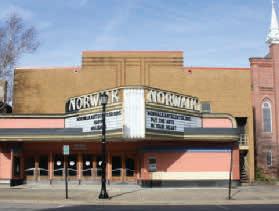
ORRVILLE • WAYNE COUNTY
J.M. SMUCKER HOUSE 708 N. Main St.
This frame house built in 1907 is the former home of J.M. Smucker (1858–1948), who in 1897 founded the J.M. Smucker Co., maker of apple butter, jams and jellies. The company grew from a small regional brand to national distribution within his lifetime. He and his family lived in this house, across the street from the business he established, for more than 40 years. Smucker was an instrumental community leader, serving on the board of the local bank, helping to establish churches for Mennonite congregations in the area and founding the Orr Park board. The modest house is notable for the care with which subsequent generations of Smuckers and the company have maintained it.

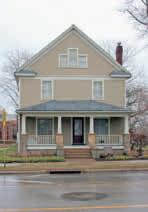
PORTSMOUTH VICINITY • SCIOTO COUNTY
OHIO & ERIE CANAL SOUTHERN DESCENT HISTORIC DISTRICT (BOUNDARY INCREASE) Old River Road at Slab Run
The boundary of the Ohio & Erie Canal Southern Descent Historic

District, added to the National Register in 2019, has been extended to take in Lock 55, the canal’s southern terminus where it meets the Ohio River. Lock 55 illustrates how the canal linked inland Ohio with the river, a major transportation route. Two cross-state canals were built in 19th-century Ohio: the Miami & Erie and the Ohio & Erie. Lock 55 is the only surviving terminus on the two canals, a rare multichamber lock that also illustrates the technology engineers used where a road had to cross the canal in a way that wouldn’t impede traffic on either one.
TOLEDO • LUCAS COUNTY CRAFT MASTER BUILDING 328 N. Westwood Ave.
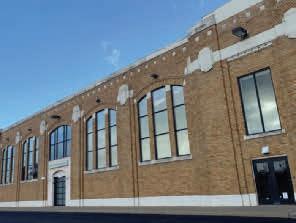
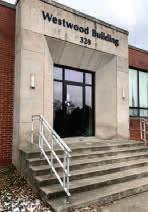
Did you know that Craft Master paint-by-numbers kits came from Ohio? Popular in the 1950s and beyond, they were produced in this Toledo office and warehouse building. Built in 1947, it became home to Donofrio Industries in 1950, at the time a supplier of paint containers. From 1950 to 1972, the building was the home of Craft Master, the country’s most prolific and successful paint-by-numbers manufacturer. The building and
its expansion over time reflect the success of the product, a worldwide phenomenon that sat at the intersection of mass production, popular culture and art during a unique moment in history when many Americans were seeking ways to fill leisure time.
TOLEDO • LUCAS COUNTY TOLEDO CITY MARKET 201-237 S. Erie St.
This 1912 building, sometimes referred to as Erie Street Market, has been added to the National Register for its association with the history of commerce in Toledo. It was home to the city’s wholesale produce market for more than half a century, and for part of that time housed a retail produce market, too. In 1929, the open-air market was enclosed and a new civic auditorium was added within the building’s original footprint. While still housing the produce market, the facility also became Toledo’s primary convention hall, hosting trade shows as well as concerts and other forms of entertainment. It became a public works facility for the City of Toledo in 1966.

OHIOHISTORY.ORG 13
All National Register photos courtesy State Historic Preservation Office
OHIO STORIES

Hallie Q. Brown


Hallie Quinn Brown was an African American author, educator and equal rights advocate during the late 19th and the early 20th centuries.
Brown was born on March 10, 1845 (sometimes reported as 1849), in Pittsburgh, Pennsylvania, where her parents, formerly enslaved, were active with the Underground Railroad. In 1864, the Brown family moved to Canada, and six years later, the Browns relocated to Xenia, Ohio, where Hallie Brown attended Wilberforce University, graduating in 1873.
EDUCATOR AND ADVOCATE
Upon graduating, Brown moved to Mississippi, where she found employment as a teacher of African American children. Soon Brown accepted a teaching position in the African American schools of Columbia, South Carolina. There, she also served as a dean at Allen University, a historically Black institution of higher education, from 1885 to 1887. From 1887 to 1891, she taught night school for African Americans in Dayton, Ohio. From 1892 to 1893, Brown worked at the Tuskegee Institute in Alabama.
In 1894, Brown became active in the civil rights and temperance movements. She traveled across the United States and overseas, lecturing on these two movements. She even received an audience before Great Britain’s Queen Victoria. She also participated in the World’s Woman’s Christian Temperance Union (1895) and in the International Congress of Women (1899). Besides making speeches, Brown also helped found or lead several reform groups. In 1893, she became involved in the Colored Women's League of Washington, D.C. That same year, she helped establish the National Association of Colored Women. She presided over this group from 1920 to 1924. Following her tenure as president, the organization appointed her as its honorary president for the remainder of Brown’s life. Brown also became the African Methodist Episcopal Church’s secretary of education in 1900.
PROFESSOR, REFORMER AND AUTHOR
During the late 1890s, Brown returned to Ohio. Here she was a professor at Wilberforce University and continued her reform efforts, helping organize the Ohio State Federation of Colored Women’s Clubs, serving as its president from 1905 to 1912. She also actively campaigned for Republican presidential candidates, including fellow Ohioan Warren G. Harding.
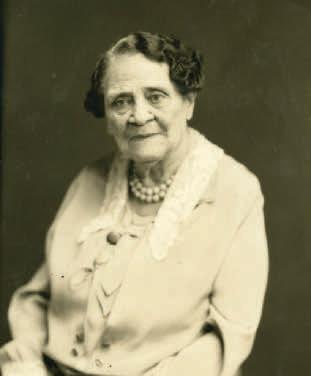
Over the course of her life, Brown authored several books, many of which detailed the plight of African Americans. She died on Sept. 16, 1949. The Hallie Q. Brown Memorial Library at Central State University in Wilberforce is named in her honor.
This biography is from Ohio History Central, our online encyclopedia of Ohio history. Discover many more stories of Ohio history at ohiohistorycentral.org
AWARDS
Echoes Takes the Cake










We recently got word that Echoes Magazine has received six MarCom Awards. They include a Platinum Award for design for our November & December 2021 issue featuring the historic May Company department store in downtown Cleveland on the cover (hats off to our designer, Lydia Stutzman of Lydiary Design) and five Gold Awards in the nonprofit magazine category for the January & February, March & April, May & June, July & August and September & October 2022 issues.
The MarCom Awards honor excellence in marketing and communication and recognize the creativity, hard work and generosity of industry professionals. Each year, about 6,500 print and digital entries are submitted from dozens of countries. The MarCom Awards are administered by the Association of Marketing and Communication Professionals, an international organization founded in 1995 that consists of several thousand marketing, communications, advertising, public relations, digital and web professionals.

Echoes Magazine covers: November & December 2021, January & February 2022, March & April 2022, September & October 2022


14 Echoes | JANUARY & FEBRUARY 2023
National Afro-American
Museum & Cultural Center
Hallie Q. Brown’s last formal portrait, likely taken in the late 1930s.
Historic Sites & Museums
NORTHWEST OHIO
Armstrong Air & Space Museum
Cedar Bog Nature Preserve
Cooke-Dorn House
Fallen Timbers Battlefield Memorial Park
Fort Amanda Memorial Park
Fort Jefferson Memorial Park
Fort Meigs
Fort Recovery Museum & Monument
Glacial Grooves Geological Preserve
Hayes Presidential Library & Museums
Indian Mill
Inscription Rock Petroglyphs
Johnston Farm & Indian Agency
Lockington Locks
NORTHEAST OHIO
Custer Monument
Fort Laurens
McCook House Museum of Ceramics
Quaker Yearly Meeting House (Open by Appointment) & Free Labor Store/Benjamin Lundy House (Preservation in Progress • Not Open)
Schoenbrunn Village
Shaker Historical Museum
Tallmadge Church
Youngstown Historical Center of Industry & Labor
Zoar Village
CENTRAL OHIO
Flint Ridge Ancient Quarries & Nature Preserve
Hanby House
Logan Elm
Newark Earthworks
Ohio History Center & Ohio Village
Poindexter Village Historic Site (Preservation in Progress • Not Open)
Shrum Mound
Wahkeena Nature Preserve
Warren G. Harding Presidential Sites
Ohio

SOUTHWEST OHIO
Adena Mansion & Gardens
Davis Memorial Nature Preserve
Fort Ancient Earthworks & Nature Preserve
Fort Hill Earthworks & Nature Preserve
Harriet Beecher Stowe House
John Rankin House
Miamisburg Mound
National Afro-American Museum & Cultural Center
Paul Laurence Dunbar House
Serpent Mound Story Mound
U.S. Grant Birthplace
U.S. Grant Boyhood Home & Schoolhouse
William Henry Harrison Tomb
SOUTHEAST OHIO
Big Bottom Memorial Park
Buckeye Furnace
Buffington Island Battlefield Memorial Park
Campus Martius Museum
John & Annie Glenn Museum
Leo Petroglyphs & Nature Preserve
National Road & Zane Grey Museum
Ohio River Museum
Our House Tavern
OHIOHISTORY.ORG 15
OHIO HISTORY CONNECTION
1. 2. 3. 4. 5. 6. 7. 8. 9. 10. 11. 12. 13. 14. 15. 16. 17. 18. 19. 20. 21. 22. 23. 24. 25. 26. 27. 28. 29. 30. 31. 32. 33. 34. 35. 36. 37. 38. 39. 40. 41. 42. 43. 44. 45. 46 47. 48. 49. 50. 51. 52. 53. 54. 55. 56.
History Connection members enjoy free regular admission to these Ohio History Connection sites. Before traveling, visit ohiohistory.org/sites to confirm hours and any special requirements.
Shawnee State Park Table
SAT., FEB. 4
Ohio History Center
PROGRAMS & EXHIBITS AT THE & Ohio Village
Lustron House Decorated for the Holidays + Holiday Train Display
THROUGH SUN., JAN. 8
It’s Christmas, 1950s-style, in our real, fully furnished Lustron house! Drop by to see how Dottie and Bob have decorated and check out little Jimmy’s model train display, courtesy of Central Ohio Model Railroad Club. Included with Ohio History Center museum admission.
MLK Day Open House
MON., JAN. 16 • 11 A.M.–4 P.M.
In partnership with Columbus’s King Arts Complex, the Ohio History Center presents the annual MLK Day Open House. Celebrate the life and legacy of civil rights leader Dr. Martin Luther King Jr. through visual and performing arts, and learn about the impact of Dr. King’s teachings. Free. 800.686.6124 or ohiohistory.org/mlkday
55+ CREATIVE AGING African-Inspired Jewelry Making—Mixed Medium Class
SATURDAYS, JAN. 21–FEB. 18 NOON–4 P.M.
Explore how traditional African artisans have made beads from glass, brass, wood, shell and bone, and receive a sampling of beads to start your collection. Learn to create your own unique wearable art made from paper, fabric, leather and found objects, then show off your work in a class fashion show. $40/age 55+, $35/Ohio History Connection member age 55+. Advance registration required. 800.686.6124 or info@ohiohistory.org
Supported in part by a grant from E. A. Michelson Philanthropy.
NATURAL HISTORY Wild Ohio Weekend
SAT. & SUN., FEB. 4 & 5 • 10 A.M.–4 P.M.
Join us for a weekend of special natural history programs and learn more about plants and animals that call Ohio home.
SATURDAY: TALK Fossils
SAT., FEB. 4 • 11 A.M.
The rocks under Ohio have many stories to tell about the rise and fall of oceans, the drift and crashing of continents and the animals that called this area home during the Devonian Period, 370 to 400 million years ago. Hear curator Dale Gnidovec of The Ohio State University’s Orton Geological Museum share some of those stories.
TALK Wolves SAT., FEB. 4 • 1 P.M.
Learn about some of North America’s most fascinating wild animals—wolves!
Representatives of the Ohio Canid Center will separate fact from fiction, covering some of their family life, diet, habitat and role in the ecosystem, plus you’ll have the chance to see a live wolf.
Orton Geological Museum Table SAT., FEB. 4
See samples of the wonderful rocks, minerals and fossils found in Ohio.
What types of turtles are in Ohio? What are the differences between lizards and salamanders? Are all snakes venomous?
Join Shawnee State Park naturalists to learn about Ohio’s reptiles and amphibians, and check out a few native animal ambassadors.
SUNDAY: TALK
COSI’s Wild Experience
SUN., FEB. 5 • 11 A.M.
COSI’s Wild Experience will bring animals from its ambassador collection to talk about some truly wild science. Meet some of these amazing animals in this hands-on experience!
TALK Ohio’s Ice Age Geology and Wildlife
SUN., FEB. 5 • NOON
Hear Ohio Department of Natural Resources geologist Tyler Norris talk about the Ohio History Connection’s Cedar Bog Nature Preserve in Champaign County, including the geological forces that shaped it during the Ice Age and its Ice Age plants and animals.
BOTH DAYS:
Ohio Bird Conservation Initiative Table
SAT. & SUN., FEB. 4 & 5
Learn how to make your home more hospitable to migratory and resident birds.
Ohio Department of Natural Resources Division of Wildlife Table
SAT. & SUN., FEB. 4 & 5
Learn about some of Ohio’s most popular mammals, with pelts, skulls and tracks.
Ohio Geological Survey Table
SAT. & SUN., FEB. 4 & 5
Ohio Geological Survey geologists will be on hand with a variety of plant and animal fossils, publications and activities to help share the story of Ohio’s natural history, including three state symbols: Dunkleosteus terrelli, Isotelus and flint. Young learners can identify fossils to earn a prize.
*Museum admission is $16; $14/ages 60+ or student with ID; $10/ages 4–12. Ohio History Connection members and ages 3 & under enjoy free admission.
16 Echoes | JANUARY & FEBRUARY 2023
Wild Ohio Weekend programs are included with Ohio History Center museum admission.*

Visit ohiohistory.org/wildohio for a full list of Wild Ohio Weekend programs.
Presidents Day
MON., FEB. 20 • 10 A.M.–4 P.M.
Celebrate Presidents Day at the Ohio History Center and enjoy special presidential-themed programs and activities throughout the day. Included with Ohio History Center museum admission. 800.686.6124 or ohiohistory. org/presidentsday
BLACK HISTORY
The Tea Room J
SAT., FEB. 18 • 11 A.M.–1:30 P.M.
The Tea Room is a contemporary look at the African American Tea Ceremony that began in the mid-19th century. Annually on Feb. 15, enslaved people joined together for fellowship over tea. This tradition evolved into gatherings held in churches and, later, tea houses. Designed to create an environment of unity and empowerment, our Tea Room will be a forum to learn about African American culture. $25, $20/Ohio History Connection member. Advance registration required by Feb. 11. 800.686.1541 or ohiohistory.org/ tearoom
Night at the Museum
SAT., FEB. 25 • 7–9 P.M.
Here’s your chance to experience the Ohio History Center museum after hours and see whether our exhibits really do come to life! This family event promises to entertain children and adults alike. Dozens of figures from history will be roaming the museum. Grab a free souvenir autograph book and collect signatures of your favorites! Snacks and beverages will be available for purchase. Advance tickets required. Tickets go on sale to Ohio History Connection members Monday, Jan. 9 ($13/Ohio History Connection member, $9/Ohio History Connection member ages 4–12, Free/age 3 & under), and to nonmembers
Monday, Jan. 16. ($18, $14/ages 4–12). 800.686.1541 or ohiohistory.org/ nightatmuseum
FILM SCREENING AND DISCUSSION
As a Matter of Black J
SUN., FEB. 26 • 1–3 P.M.
The film As a Matter of Black is a documentary chronicling the work of local artists during a time of civil unrest. After a viewing of the film, Donte WoodsSpikes, the filmmaker, will talk about the motivation behind his work and lead a discussion with artists featured in the film. $15, $10/Ohio History Connection member. Tickets in advance or at the door. 800.686.1541 or ohiohistory.org/ matterofblack
FEATURED EXHIBITS
• • •
Indigenous Wonders of Our World—The Hopewell Ceremonial Earthworks ONGOING
Indigenous Wonders of Our World looks at eight 2,000-year-old Hopewell earthworks in Ohio: Fort Ancient, near Oregonia and Lebanon; Newark’s Great Circle and Octagon; and Hopewell Mound Group, Mound City, Hopeton Earthworks, Seip Earthworks and High Bank Works, all near Chillicothe. Unique in the world, they’re the focus of a nomination now underway proposing that they be named World
wild with nature-themed things
ohiohistory.org/wildohio

OHIOHISTORY.ORG 17
Go
to
Sat.,
February is Black History Month. Follow the Star J to Black History Month programs in this issue of Echoes Magazine. FEB. 4 & 5 Wild Ohio Weekend
do in the museum both days!
Feb. 4 & Sun., Feb. 5 10 a.m.–4 p.m. OHIO
HISTORY CENTER, COLUMBUS
MLK Day Open House
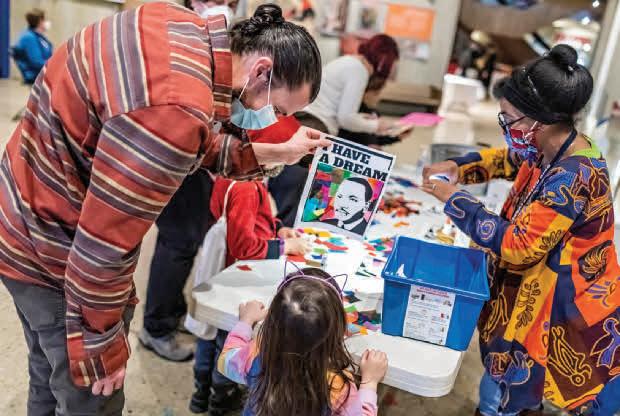
Heritage Sites by UNESCO, the United Nations Educational, Scientific and Cultural Organization. The exhibit looks at mathematical similarities among them, their enormous scale and their alignments to the solstices and/or the 18.6-year lunar cycle. An immersive component allows you to experience the astronomical alignments.
Ohio—Champion of Sports ONGOING
Ohio—Champion of Sports features more than 70 stories and 35 oral histories covering more than 25 sports ranging from baseball, football and basketball to roller derby, skateboarding and e-gaming. The exhibit showcases the Ohio athletes, coaches, owners and fans at the center of the action and explores sports through the themes of Character, Adversity, Innovation, Identity, Tradition and Victory—values that relate to the human condition—to connect a broad audience to Ohio’s national sports history. You can test your basketball skills at the Wall of Hoops, record a “victory dance” to share with family and friends, and record your own “One Minute Legends” sports story.
HURRY! ENDS SOON!
Votes for Women— 100 Years of Change THROUGH JAN. 22
Votes for Women commemorates the 100th anniversary of the 19th Amendment. Through the voices of Ohio women, explore women’s activism in the suffrage movement and other related social movements—such as voting and citizenship—from the 19th century to the present. Featured are a suffrage parade blouse, jacket and sashes worn in the 1910s by Mary Stuart Andrews of Warren, who worked for the Ohio Woman Suffrage Association, and a suffrage parade banner made in 1910 by Columbus Sign Co.
1950s—Building
the
American Dream ONGOING
Get a look at life in the 1950s. Peek in the closets and snoop in the drawers of a real, fully furnished Lustron steel house made right here in Ohio. From the contents of the cupboards to the news on TV and the toys in the yard, this hands-on exhibit is a fascinating journey back in time.
World War I Display ONGOING
See equipment, weapons, uniforms and memorabilia commemorating the centennial of World War I.
Creative Ohio—Artists, Artwork & Their Inspiration ONGOING
Through pieces from Ohio History Connection collections, explore the artwork, inspiration and creative processes of four Ohio artists—Paul-Henri Bourguignon (1906–1988), Emerson Burkhart (1905–1969), Hayward Dinsmore (1913–2000) and William Hawkins (1895–1990)—and create your own artistic masterpiece. Support provided by the Erika Bourguignon Charitable Trust.
Ohio History Center & Ohio Village Hours
Museum
WEDS.–SUN. 10 A.M.–5 P.M.
CLOSED MON.–TUES.
CLOSED FOR MAINTENANCE MON., JAN. 2 THROUGH FRI., JAN. 13 CLOSES AT 4 P.M. SAT., FEB. 25
OPEN NEW YEAR’S DAY, SUN., JAN. 1
OPEN MARTIN LUTHER KING JR. DAY, MON., JAN. 16
OPEN PRESIDENTS DAY, MON., FEB. 20
Ohio Village
CLOSED FOR THE WINTER, OHIO VILLAGE REOPENS TO MEMBERS SAT., APRIL 1, AND TO ALL SUN., APRIL 2. HOURS FROM APRIL 1 THROUGH MAY 14 ARE SATURDAY AND SUNDAY 10 A.M.-5 P.M.
Third Floor Research Room
OPEN BY APPOINTMENT ONLY
ohiohistory.org/learn/archives-library
WEDS. 12:30–3 P.M.
THURS. & FRI. 10 A.M.–3 P.M.
CLOSED SAT.–TUES.
Plaza Cafe
OPEN JAN. 2–6, 9 A.M.–1 P.M. CLOSED JAN. 7–8
STARTING JAN. 9, OPEN MON.–TUES. 9 A.M.–1 P.M. & WEDS.–SUN., 9 A.M.– 3 P.M.
The Plaza Cafe serves grab-n-go salads, sandwiches, sides and desserts, coffee, tea, juices and Pepsi products. Ohio History Connection members save 10% at the Plaza Cafe.
18 Echoes | JANUARY & FEBRUARY 2023
JAN. 16
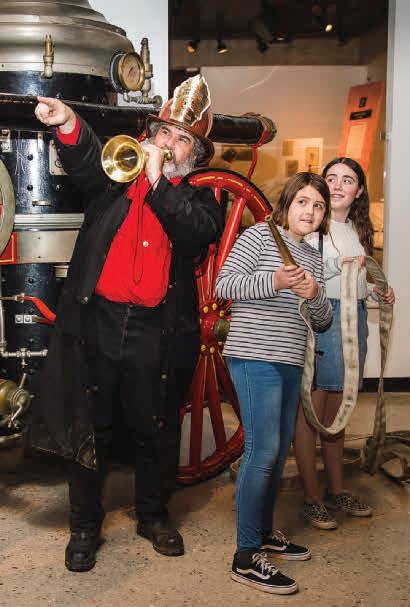

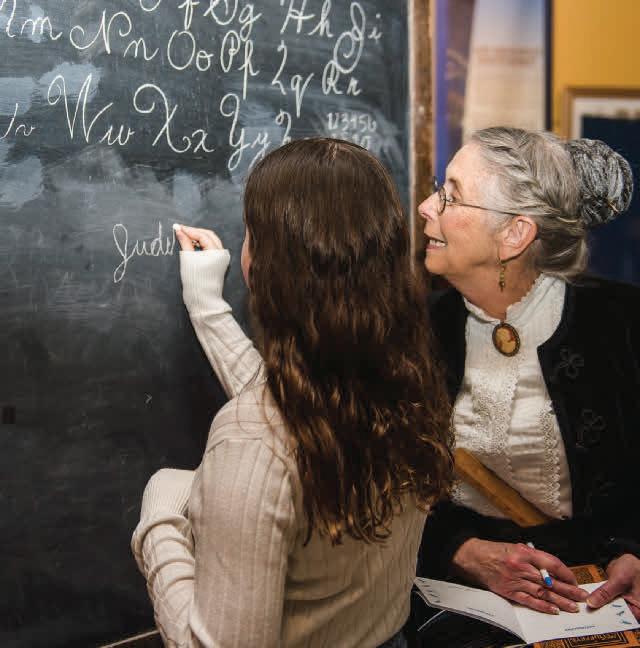


OHIOHISTORY.ORG 19 FEB. 25
Let Us Help You Create A Day for the History Books Barefeet Studio
a Legacy
Night at the Museum We offer a unique wedding experience you can’t get anywhere else. events@ohiohistory.org ohiohistory.org/weddings 614.297.2475
Leave
Passionate about preserving history for future generations? Consider including the Ohio History Connection as a beneficiary in your estate plans. Our staff can help you choose options that best fit your needs. Call 800.647.6921 to learn more.
Online Events
55+
CREATIVE AGING Advanced Weaving for Art and Function
THURSDAYS, JAN. 19–MARCH 9 10 A.M.–NOON Online—Attend from Anywhere! Hosted by the Ohio History Center, Columbus 4 Explore different types of looms and learn about the history of weaving across the world. For those who’ve completed the basic weaving class or who have some previous experience, this online class requires a device with a camera and a stable internet connection. $40/age 55+, $35/ Ohio History Connection member age 55+. Advance registration required. 800.686.6124 or info@ohiohistory.org Supported in part by a grant from E. A. Michelson Philanthropy.
PLEASURES OF THE CUP
Ohio on the Rocks
SAT., JAN. 21 • 7–8 P.M. Online—Attend from Anywhere! Hosted by the Ohio History Center, Columbus 4 Join us from the comfort of home for our coolest Pleasures of the Cup event yet! Learn about mammoths, mastodons, short-faced bears and other creatures that roamed Ohio during the Ice Age while you mix icy drinks along with us! Register and you’ll receive drink recipes in advance plus a link to the presentation about two hours before it starts. Must be 21+ to attend. Alcohol not provided. Advance registration required: $10, $5/Ohio History Connection member, Free/premium member. 800.686.1541 or ohiohistory.org/virtual
MEMBER VIP
Freeze-Drying, Formalin and Flesh-Eating Beetles— How Museums Preserve and Prepare Specimens
TUES., JAN. 24 • 3–4 P.M.
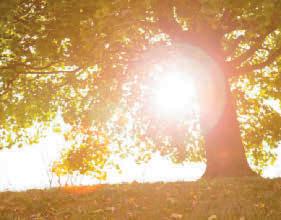
Online—Attend from Anywhere! 4 Hosted by the Ohio History Connection’s Membership Department 4 Join us for this special members-only event as Natural History curator Dave Dyer offers a behindthe-scenes look at how natural history specimens are preserved and prepared. Learn how curators create beautiful and engaging animal skeletons and taxidermy mounts, how delicate flowers and fungi are preserved and what, exactly, is in those jars of preserved specimens! Free to Ohio History Connection members with advance registration: ohiohistory.org/specimen
POWER OF VOICE SERIES
Two Men in the Crossfire J
WEDS., FEB. 1 • 7–8 P.M. Walnut Hills Library, Cincinnati, and Online—Attend from Anywhere! Hosted by Harriet Beecher Stowe House, Cincinnati 4 See page 23.
MEMBER VIP
Neil Armstrong and the Learjet Longhorn
THURS., FEB. 16 • 3–4 P.M. Online—Attend from Anywhere! Hosted by the Ohio History Connection’s Membership Department 4 Join Greg Brown, historian and collections coordinator, for a behind-the-scenes look at the Armstrong Air & Space Museum’s Learjet Longhorn, the first production aircraft equipped with “winglets.” Neil Armstrong set five aviation records in it in 1979. Hear about its development and characteristics and Armstrong’s record-setting flights.
Brown will also share the story of bringing the Learjet to the Armstrong Museum and installing it on the grounds. Free to Ohio History Connection members with advance registration: ohiohistory.org/learjet
20 Echoes | JANUARY & FEBRUARY 2023 Across the state, the Ohio History Connection oversees 58 historic sites and museums located in 40 counties, which include: 33 historic sites 12 museums 5,000 acres of land 9 archaeological sites 8 canal locks 4 major bridges 2 boats 300 buildings built from 1788–2013 4 natural histor y sites Support Ohio history while giving the gift of day trips and weekend fun to your family and friends. MEMBERSHIPS MAKE Great Gifts! Visit ohiohistory.org/giftmembership or call 800.686.1545 for more info.
ATTEND FROM ANYWHERE!
Events & Exhibits
Many programs and events at Ohio History Connection museums and attractions require advance registration. To register, call the number or visit the website listed with each program.
Our online calendar offers more upto-date information about programs and events at Ohio History Connection museums and attractions. Find it at ohiohistory.org/calendar Questions? Call 800.840.6127
STATEWIDE
OHIO HISTORY DAY Regional History Day Contests
SAT., FEB. 25, MARCH 4, 11, 18, 25 & APRIL 1 9 A.M.–5 P.M.
See fourth- through 12th-graders present their history projects, competing for a chance to move on to our April 22 statewide History Day competition. FEB. 25: East Central (Region 5), Canton. MARCH 4: South Central (Region 9), Rio Grande; Northeast (Region 3), Cleveland; West Central (Region 7), Piqua. MARCH 11: Northwest (Region 1), Bowling Green; Central (Region 6), Columbus. MARCH 18: Southwest (Region 8), Cincinnati. MARCH 25: North Central (Region 2), Sandusky; Southeast (Region 10), New Concord. APRIL 1: Northeast (Region 4), Youngstown. Get details at 800.686.6124, 614.297.2526 or ohiohistoryday.org
Special thanks to Champion Sponsor Ohio’s 529 Plan, CollegeAdvantage, and to Sponsor William K. Laidlaw Jr. Memorial Endowment Fund.
Statehood Day
THURS., MARCH 2 • 10 A.M.–2 P.M. Statehouse, Columbus 4 Join advocates for preserving Ohio’s history and heritage for our annual Statehood Day celebration. A variety of concurrent activities will be offered throughout the day. Free with required advance registration by Feb. 22 at ohiohistory.org/statehoodday. Questions? Email statehood@ohiohistory.org
Ohio Local History Alliance Regional Meetings
SATURDAYS, MARCH 4–APRIL 1 9 A.M.–4 P.M.
Active in local history? Register now for the Ohio Local History Alliance Regional Meeting in your vicinity. These annual gatherings of local historians and others active in local historical societies, museums and related organizations start Saturday, March 4. This year’s theme is History as Necessity. Each meeting includes a session related to the theme, plus additional skill-building sessions; reports from the Ohio Local History Alliance and the Ohio History Connection; an opportunity to share what your organization is doing; and a tour of a nearby museum or site. Advance registration required. MARCH 4: Central (Region 6) in Newark and West Central (Region 7) in Springfield. Register by Feb. 24. MARCH 11: Southwest (Region 8) in Cincinnati and South Central (Region 9) in Athens. Register by March 3. MARCH 18: Northwest (Region 1) in Bowling Green and Southeast (Region 10) in Warsaw. Register by March 10. MARCH 25: North Central (Region 2) in Loudonville and Northeast (Region 4) in Niles. Register by March 17. APRIL 1: Northeast (Region 3) in North Olmsted and East Central (Region 5) in Steubenville. Register by March 24. Get full meeting details and register at ohiolha.org Questions? Call 614.297.2538
CENTRAL OHIO
Central Ohio Region 6
Ohio History Day Contest
SAT., MARCH 11 • 8 A.M.–4 P.M.
Ohio Statehouse, Columbus 4 Registration Deadline: Feb. 21 | Submission Deadline: Feb. 27 | Counties: Delaware, Fairfield, Fayette, Franklin, Knox, Licking, Madison, Perry, Pickaway and Union. 800.686.6124, 614.466.9335 or ohiohistoryday.org
February is Black History Month. Follow the Star J to Black History Month programs in this issue of Echoes Magazine.
NORTHEAST OHIO
Northeast Ohio Region 5 Ohio History Day Contest
SAT., FEB. 25 • 8 A.M.–4 P.M.
McKinley Museum & Presidential Library, Canton 4 Registration Deadline: Feb. 4 | Submission Deadline: Feb. 11 | Counties: Carroll, Columbiana, Harrison, Holmes, Jefferson, Stark, Tuscarawas and Wayne. 800.686.6124, 330.455.7043 or ohiohistoryday.org
Region 3 Ohio History Day Contest
SAT., MARCH 4 • 8 A.M.–4 P.M.
Western Reserve Historical Society, Cleveland 4 Registration Deadline: Feb. 3 | Submission Deadline: Feb. 17 | Counties: Cuyahoga, Lake, Lorain, Medina and Summit. 800.686.6124, 216.721.5722 ext. 1503 or ohiohistoryday.org
NORTHWEST OHIO
Northwest Ohio PLAY Looking Over the President’s Shoulder J
SUN., FEB. 12 • 2–3:30 P.M. Hayes Presidential Library & Museums, Fremont 4 See Tyrek Hyde in this oneman show about Alonzo Fields, who served as White House chief butler for four U.S. presidents: Herbert Hoover, Franklin Roosevelt, Harry Truman and Dwight Eisenhower. Famous guests through the years included Winston Churchill, Marian Anderson, Errol Flynn and the king and queen of England. As Fields says in the play: “It was like being in the front row and watching the passing parade of history.” Set on the eve of his last day on the job, Fields reflects on his 21 years of service to his country with humor and pride. $15, $10/ age 18 or younger. This production is part of President Rutherford B. Hayes’s 200th birthday celebration. 800.998.7737 or rbhayes.org
OHIOHISTORY.ORG 21
HISTORY CONNECTION
FEATURED OHIO
CABIN
Region 7 Ohio History Day Contest
SAT., MARCH 4 • 9 A.M.–5 P.M.

Piqua Junior High School, Piqua Registration & Submission Deadline: Feb. 15 | Counties: Auglaize, Champaign, Clark, Darke, Greene, Logan, Mercer, Miami, Montgomery, Preble and Shelby. 800.752.2619, 937.773.2522 or ohiohistoryday.org
Region 1 Ohio History Day Contest
SAT., MARCH 11 • 8 A.M.–4 P.M. Bowling Green State University, Bowling Green 4 Registration & Submission Deadline: Feb. 25 | Counties: Allen, Defiance, Fulton, Hancock, Hardin, Henry, Lucas, Paulding, Putnam, Van Wert, Williams and Wood. 800.686.6124, 419.372.2030 or ohiohistoryday.org
FEATURED EXHIBITS • • •
Hayes Train Special Model Train Display
THROUGH SUN., JAN. 8 • VISIT RBHAYES. ORG FOR DAYS AND HOURS
Closed New Year’s Day 4 Hayes Presidential Library & Museums, Fremont 4 See model trains running through a winter holiday wonderland. Interactive buttons allow visitors to control aspects of the trains’ movements along the winding, multi-tiered layout. Access to Hayes Train Special is free. Donations will be accepted. 800.998.7737 or admin@rbhayes.org
Mustering Memory—160 Years of Saluting the Civil War
ONGOING THROUGH APRIL 30 • VISIT RBHAYES.ORG FOR DAYS AND HOURS
Closed Christmas Eve, Christmas Day and New Year’s Day 4 Hayes Presidential Library & Museums, Fremont 4 From the aged veterans who walked on the fields of Gettysburg to commemorate its 50th anniversary in 1913, to modern enthusiasts who use vacation time reliving famous battles or scouring Civil War antique shows, this exhibit explores the history of how people have chosen to—and still choose to— remember the Civil War. Featuring items from Hayes collections, the exhibit also shares information about Civil War reenacting and memorabilia collecting. 800.998.7737 or rbhayes.org
Southeast Ohio

Region 9 Ohio History Day Contest
SAT., MARCH 4 • 8 A.M.–4 P.M.
University of Rio Grande, Rio Grande
Registration Deadline: Feb. 17 |
Submission Deadline: Feb. 24 | Counties: Athens, Gallia, Hocking, Jackson, Lawrence, Meigs, Pike, Ross, Scioto and Vinton. 800.686.6124, 740.245.0593 or ohiohistoryday.org
Southwest Ohio
DUNBAR LITERARY CIRCLE Dunbar
Poetry J
SUN., JAN. 8 • 2–4 P.M.
Paul Laurence Dunbar House, Dayton
The Dunbar Literary Circle meets on the second Sunday of the month, sponsored by the Paul Laurence Dunbar Branch of the Association for the Study of African American Life and History and Dayton
Aviation Heritage National Historical Park. Starting and ending with Paul Laurence Dunbar’s poetry, each program is an opportunity for sharing of, and dialogue about, various poetry and its content. Please enter through the Visitor Center entrance on Edison Street (around the corner from the Dunbar House). Tours of the Dunbar House are free, available 10 a.m. to 4 p.m. Friday, Saturday and Sunday (last tour at 3:30 p.m.). 937.225.7705 or ohiohistory.org/dunbar
Old Capitol Brewing Lecture
SAT., JAN. 14 • 11 A.M.
Adena Mansion & Gardens, Chillicothe Join us for an event with Old Capitol Brewing. Learn how the brewing process works and about Chillicothe’s brewing history. Free. 800.319.7248 or adenamansion.com
GRAVE MATTERS
Explore the Final Resting Place of the Worthington Family
SAT., JAN. 21 • 11 A.M.–NOON
Adena Mansion & Gardens, Chillicothe Thomas and Eleanor Worthington raised 10 children at Adena, though only five are buried in Ross County. Join Mary Anne Brown, Worthington family historian, for a verbal tour of the final resting places of all 10 Worthington children, some far from the Adena home of their youth. Free. 800.319.7248 or adenamansion.com
22 Echoes | JANUARY & FEBRUARY 2023 NOW ON EXHIBIT
ohiohistory.org/wonders Many Ohio History Connection museums and attractions are open year ‘round!
800.686.6124
FEVER?
a list with details at ohiohistory.org/winter
Find
SOUTHEAST OHIO
SOUTHWEST OHIO
Docent Training
SAT., JAN. 21 • 10:30 A.M.–1 P.M.
Harriet Beecher Stowe House, Cincinnati
Do you love telling stories about freedom, abolition, social justice, empowerment and women who changed the world?
Harriet Beecher Stowe House is training volunteer docents for the season and you’re invited to join the team. Your first step: Attend our open house and initial training session. We’ll do a tour, talk about expectations and provide you with the material for learning the tour narrative. Returning volunteer? Experienced docents will have a refresher course and information on tour enhancements the same day and time. 800.847.6075 or stowehousecincy.org
POWER OF VOICE SERIES
Two Men in the Crossfire J
WEDS., FEB. 1 • 7–8 P.M.
Walnut Hills Library, Cincinnati, and Online Hosted by Harriet Beecher Stowe House, Cincinnati 4 Although part of a free state, antebellum Cincinnati was not friendly to abolitionists and African Americans. Begin Black History Month by considering the narratives of two men who made their ways to Cincinnati after being enslaved in the South. Newly free, James Bradley enrolled as a student at Lane Seminary, and Henry Bibb came to Cincinnati as a freedom seeker. In this discussion led by Xavier University Professor Emeritus Dr. John Getz, we’ll also talk about the impact their stories had on Harriet Beecher Stowe when she wrote Uncle Tom’s Cabin. $5. Advance registration required. 800.847.6075 or stowehousecincy.org
The People Who Made Madisonville
SUN., FEB. 5 • 4–5:30 P.M.
Harriet Beecher Stowe House, Cincinnati Chris Hanlin introduces us to women and men whose remarkable civic leadership shaped one of Cincinnati’s most diverse neighborhoods. 800.847.6075 or friends@stowehousecincy.org
Finding Your Roots—Explore the History of Ross County
SAT., FEB. 18 • NOON–1 P.M. Adena Mansion & Gardens, Chillicothe Join local historian Beverly Gray for a talk
about genealogy. Explore Ross County history as well as how to discover more about your own family history. Free. 800.319.7248 or info@adenamansion.com
HARD HAT TOUR Peek Inside the Restoration Process
SAT., FEB. 18 • 11 A.M.–NOON Harriet Beecher Stowe House, Cincinnati The Harriet Beecher Stowe House has evolved significantly over nearly 200 years. As the historic restoration continues, we’re uncovering new questions and answers every week. Join volunteer Eric Driscoll to explore behind the scenes and get the latest updates on the architectural investigation and historic restoration underway. Tour participants must be able to navigate narrow and/or steep staircases. 800.847.6075 or stowehousecincy.org
SEMI-COLON CLUB
Richard Wright’s Film Almos’ a Man J
SAT., FEB. 25 • 10–11 A.M. Harriet Beecher Stowe House, Cincinnati
Discuss the perennial themes of identity, power, violence and fear in Richard Wright’s short story as adapted in the film starring LeVar Burton. 800.847.6075 or stowehousecincy.org
POWER OF VOICE SERIES
19th-Century Women and Domesticity
WEDS., MARCH 1 • 7–8:30 P.M. Harriet Beecher Stowe House, Cincinnati Praise for the “True Woman” by Catharine Beecher, her sister Harriet and many others in the 19th century sought to elevate the status of women by celebrating their roles at home as wives and mothers, but this ideal was often used to confine women to subservience at home and deny them freedom outside it. For Women’s History Month, we’ll consider three 19th-century women authors to see how the stories they tell reflect on the ideal of the True Woman and also speak to our time. 800.847.6075 or stowehousecincy.org
Region 8 History Day Contest
SAT., MARCH 18 • 9 A.M.–5 P.M. Cincinnati Museum Center, Cincinnati Registration Deadline: March 1 | Submission Deadline: March 3 | Counties:
Adams, Brown, Butler, Clermont, Clinton, Hamilton, Highland and Warren. 800.686.6124, 513.287.7000 ext. 7201 or ohiohistoryday.org
FEATURED
EXHIBITS • • •
PAUL LAURENCE DUNBAR 150TH Paul Laurence Dunbar— Diamond of the Gem City J
THROUGH SUN., JAN. 8 FRI.–SUN. 10 A.M.–4 P.M. Visitor Center, Paul Laurence Dunbar House, Dayton 4 See a special exhibit exploring Paul Laurence Dunbar’s life, work and legacy. Born in Dayton in 1872, Dunbar became one of America’s greatest poets, whose work later fueled a Black literary revolution. His life was marked by personal triumph and inherited trauma, both of which left indelible impressions on the world around him. This exhibit puts that life in context and positions him within a community of African American activists, including Alice Dunbar-Nelson, Hallie Quinn Brown, Frederick Douglass and Brig. Gen. Charles Young, framing him not just as a hero, but also as a human whose flaws help tell a more complete version of our American story. Free. 937.225.7705 or ohiohistory.org/dunbar
2022 Art of Soul!
Juried Art Show J
THROUGH SAT., FEB. 25
WEDS.–SAT. 9 A.M.–4 P.M. National Afro-American Museum & Cultural Center, Wilberforce 4 An annual juried exhibit featuring works created by artists from across the United States in response to this year’s theme, Black Love. Also on exhibit: African Americans Fighting for a Double Victory; Behind the Mask—Black Power in Comics; Queens of the Heartland; Rhythm of Revolution; and What’s in Your Attic? Selections from Our Permanent Collection, including a special miniexhibit, Playing with Identity—Selections from the Lillian M. Bartok Black Doll Collection. Included with museum admission: $6, $5/senior, $3/ages 6–17, Free/Ohio History Connection member or age 5 & under. 800.752.2603 or ohiohistory.org/naamcc
February is Black History Month. Follow the Star J to Black History Month programs in this issue of Echoes Magazine.
OHIOHISTORY.ORG 23
Top: A family stands on the stoop of their house in Highland County’s Gist Settlement.

Bottom: Looking north within the southern limits of the Gist Settlement.
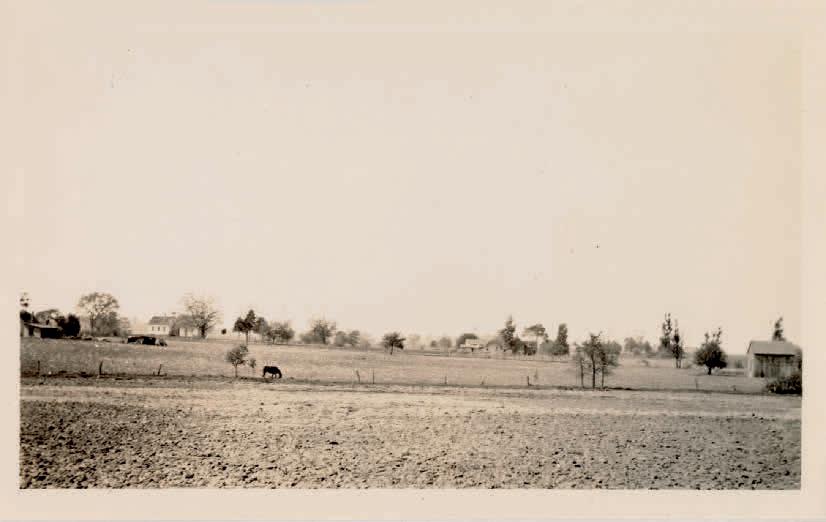
24 Echoes | JANUARY & FEBRUARY 2023
From Virginia to Freedom
THE GIST SETTLEMENTS
 BY NEIL SNARR
BY NEIL SNARR
In the decades before the Civil War, Ohio remained a favored destination for African Americans fleeing the horrors of slavery. Typically they came as individuals or pairs, but on occasion they migrated in sizable groups. One of the larger settlements of people who were freed from slavery occurred in three waves to southwest Ohio beginning in 1819. They came from the Virginia plantations that had belonged to Englishman Samuel Gist.
Gist was born in Bristol, England, in the early 18th century, and soon became an orphan. Through the generosity of the founder of the Queen Elizabeth Hospital School, he received an education. Upon leaving the school in 1739, he was apprenticed as a scribe to a Virginia merchant in North America. Upon his master’s death, he married the widow—a move to save the business from bankruptcy— and became a wealthy plantation owner with hundreds of slaves. The couple eventually had two daughters but no male heir to inherit the family operations.
Nonetheless, Gist successfully mixed with some well-established Virginia citizens, including George Washington, which helped increase his wealth. He was one of the 12 men who founded the Dismal Swamp Company to exploit a vast lake and swamp in southeast Virginia, hoping to drain it for settlement and agricultural purposes. Gist was also the only one of the group who profited from the venture, as he provided the tools and slaves for the undertaking.
Increasing unrest in the American colonies prompted him to return to England in 1765, where he ran his plantations in absentia, growing
The photos in this story, all from Ohio History Connection Archival Collections, were taken in 1928 and 1929 by Gertrude H. Terrell, author of a manuscript profiling Samuel Gist and the Highland County Gist Settlement. Some of the people in Terrell’s photos are unidentified, though the man at lower left on the cover of this issue is identified as James Hannibal Turner, then the oldest resident of Highland County’s Gist Settlement.
OHIOHISTORY.ORG 25
his wealth even further through the employment of surrogates. Gist settled in London and dabbled in the slave trade as partial or full owner of several ships, while also trading in stocks and insurance. He continued to prosper.
AN ENIGMA
Gist was an enigmatic and apparently contradictory person. While he owned and employed slaves, he displayed real concern for their well-being. At the same time, he employed hard-bargain business dealings but seemed to have a strong commitment to charities that cared for orphaned boys.
Gist’s will granted his slaves their freedom after his death. When he died in 1815, however, he hadn’t taken into consideration a Virginia law forcing manumitted slaves who remained in the state for more than one year to return to slave status. This undermined Gist’s somewhat utopian aspiration that his freed former slaves remain on his plantations and prosper. Other plans had to be made for their future. Gist’s lengthy will took years to settle—in part due to disenchanted relatives who contested it—and proved more costly than anticipated. Responsibility fell to William Fanning Wickham, the son of a famous Richmond lawyer, as the will’s trustee. Purchasing 350 Certificates of Emancipation in 1818, Wickham soon selected southwest Ohio as a new home for the former slaves.
They left Virginia for Ohio in four groups. The first two groups went to Brown County, not far from the Ohio River, in 1819. This move included 113 individuals in 32 families who settled on nearly 2,000 acres in Eagle Township, referred to as the Upper Settlement, near the village of Sardinia. In 1821, 31 families settled on 1,120 acres—the Lower Settlement— at the crossroads community of Wahlsburg, just north of Georgetown. The acreage of their plots corresponded to the size of their families.
CHALLENGES ABOUND
These two settlements met serious challenges. First, the land was poor, remote and waterlogged. Second, the neighbors were from the slave states of Virginia and Kentucky and proved decidedly unfriendly and resentful of the former slaves living on free land when they had to pay mortgages for theirs.
The only supportive neighbors were Quakers and a few Dunkards who lived a distance away. Furthermore, administration of Gist’s will by the paternalistic Wickham prevented the settlers from receiving clear
title to their land for fear it would be taken from them. This resulted in ownership complications that plagued the settlements for decades.
The residents of the two Brown County settlements eventually were able to sue the will’s trustee and obtain title to their lands in 1858 and 1859. This enabled them to sell the undesirable plots and leave the area.
A third group moved to Erie County near Sandusky sometime in the early 1820s. The land proved so unsuitable for farming and the neighbors so inhospitable that they quickly returned to Virginia. The will’s trustee eventually sold this land early in 1832 and purchased 100 acres of relatively good land in Highland County, Ohio.
The final group, comprising 44 former slaves, largely from the third group, arrived in Highland County in 1832. Three years later, local Quakers added 107 acres to this settlement. Being so close to two Religious Society of Friends communities intermittently provided the people who’d been freed from slavery with muchneeded help.
The Highland Settlement, however, suffered from the same ownership policy issue that had faced the Brown County settlements. Still, the land in Highland County was far more suitable for agriculture and the neighbors much less hostile and, at times, even supportive. As a result, it endured much longer. Located on Gist Settlement Road, it had a grade school, a church and its own cemetery. By the mid20th century, 25 houses remained occupied by Gist slave descendants. By 1964, the number of individuals had dwindled to 30.
The Carthagena Baptist Church, originally erected in the 1890s and rebuilt in the 1950s, faded in importance in the community when, in 1970, the congregation changed its name to Carthagena Overcoming Holiness Church of God and moved out of the area. With the loss of the church, the movement of younger people from the community and the older generation dying off, the community became less and less viable.
NEARLY TWO CENTURIES WAITING FOR DEEDS
The absence of a clear title remained a constant issue until 2020, when, after years of frustration and paying taxes on land simply to avoid sale for back taxes, the deeds became available. But by then, there were only two residents left. The largest parcel of 141+ acres went to the estate of Paul Turner,
26 Echoes | JANUARY & FEBRUARY 2023
whose relatives were original residents. Another 10 acres went to the other resident.
Turner had moved from community to community as a child, but seemed to keep good relations with everyone and maintained a longing to live at the Gist location. He was tall, very athletic and a hard worker. At age 19, he had joined the Navy, eventually reaching the rank of master chief petty officer.
After 26 years in the Navy, Turner returned to the settlement determined to save it and recognize it as a memorial to his precursors. He survived by farming and working for others until his death in 2019.
Before he died, Turner put into motion multiple steps toward official recognition of the settlement. Partnering with Peggy Warner, a descendant of the Brown County settlers, he orchestrated the installation of three Ohio Historical Markers for the settlements in both Highland and Brown counties in 2003, and got the process for a National Register of Historic Places listing started in Highland County. Aiding the latter were archaeological investigations of five settlement cabin sites organized as a cooperative effort from 2007 to 2011 between Washington Court House High School students, their teacher and professional archaeologists.
With the help of Turner’s close relatives and friends, the nonprofit group Gist Settlement Legacy was established to recognize and preserve the settlements. Turner’s Highland County property is currently in the estate process, but there’s good reason to believe that those hundreds of people and their families who’d endured the indignity of slavery in Virginia and sought a new life in Ohio will not soon be forgotten.
Neil Snarr, Ph.D., is professor emeritus of social and political studies at Wilmington College. He currently researches local history and writes for the Wilmington News Journal. He and his son Michael recently co-edited the seventh edition of their book, Introducing Global Issues.

LEARN MORE
Read the 1782 act of the Virginia legislature authorizing the manumission of slaves in the colony at ohiohistory.org/Gist1
Author Andrew Fede’s book, Roadblocks to Freedom: Slavery and Manumission in the United States South, “shows that procedural and evidentiary roadblocks made it increasingly impossible for many
Victoria Chinn Robinson who, upon James Hannibal Turner’s death, became the oldest resident of Highland County’s Gist Settlement. At the time, “Aunt Vic” was said to be “crowdin’ ninety.”
slaves, or free blacks who were wrongfully held as slaves, to litigate their freedom. Even some of the most celebrated cases in which the courts freed slaves must be read as tempered by the legal realities the actors faced or the courts actually recognized in the process.” According to an author’s note, “Viewers and readers of 12 Years a Slave may have wondered if enslaved people filed suits in the courts to win their release from slavery. This book tells the stories of many of the cases that were filed in the United States. The book also shows how some legislatures and courts put increasingly high legal roadblocks on this path to freedom.”
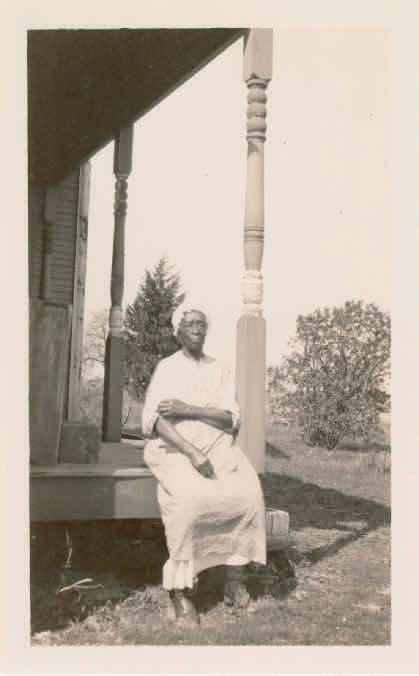
OHIOHISTORY.ORG 27
LEARN MORE
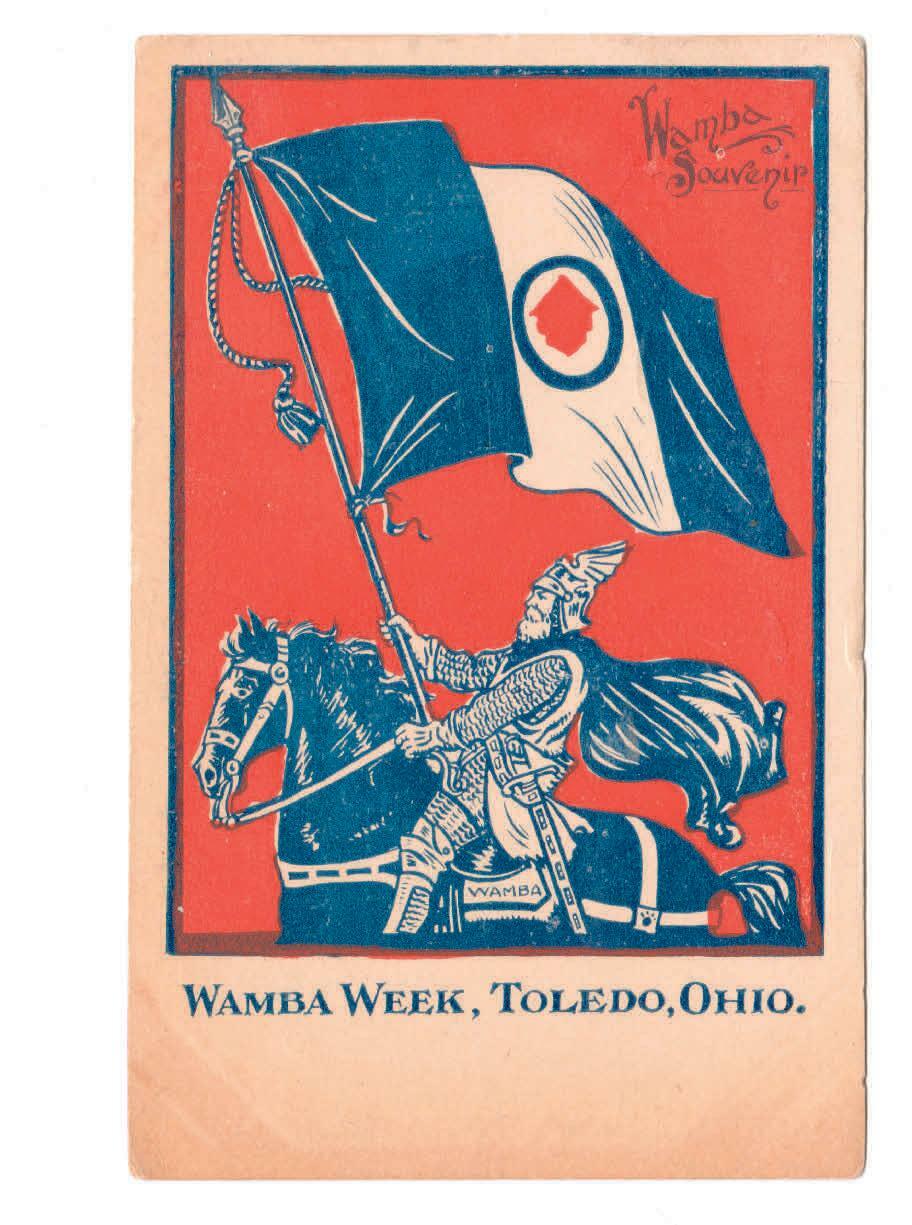
| Echoes Magazine
Ohio History Connection
Mardi Gras of the North
TOLEDO’S KING WAMBA CARNIVAL BY TOM HARMS
I
t was to be the biggest, longest, most lucrative festival in the history of Toledo, a boon to industry, commerce and fraternal organizations as well as an establishment of a better-defined link to Toledo’s sister city, Toledo, Spain.
It would be called the inaugural King Wamba Carnival, named after a legendary Visigoth king of Spain who ruled back in the seventh century with his queen, Sancha.
Sponsors dubbed it the “Mardi Gras of the North.” Almost a year in the planning, the event proved to be a great success, but none of the planners could have guessed that the monumental festival of Aug. 23–28, 1909, was destined to be a one-off, not to be revived for another 97 years.
The festivities officially launched on Tuesday, Aug. 24, at 2 p.m., when the “Royal Barge,” a yacht named Jessamine, departed from the Toledo Yacht Club, near Maumee Bay, and gradually made its way up the Maumee River to Toledo.
The barge was decorated in the colors of America and Spain. King Wamba and Queen Sancha, resplendent in their Spanish robes, were accompanied by a retinue of lords and ladies-in-waiting and a flotilla of yachts.
Down at the Madison Avenue Wharf, 1,000 paraders dressed as nobles, heralds, knights and Spanish citizens awaited their arrival.
A ROYAL SALUTE
As the royal couple approached the shore, a cannon fired a royal salute, prompting all the church bells and factory whistles in town to sound off. The king and queen disembarked onto a red carpet and were greeted by an array of musicians and singers.
Both sides of the street were lined with mounted knights, spearmen, axmen and pikemen. The royal couple boarded a chariot to proceed up to the Triangle at Collingwood, Jefferson and Monroe in the heart of the city’s West End neighborhood for the coronation ceremony.
Coinciding with a nationwide postcard craze in the early 1900s, the King Wamba Carnival is exceptionally well-documented on postcards. This King Wamba postcard, one of dozens Toledoan Ken Levin collected, was published in the book You Will Do Better in Toledo: From Frogtown to Glass City
OHIOHISTORY.ORG 29
The identities of who would portray the king and queen had been carefully protected until this moment. There had been much conjecture for weeks over who would be chosen. Wamba turned out to be Robert Hixon, president of the Hixon Lumber Company, well-concealed under a thick black beard, while Sancha was 17-year-old Ethel Chesbrough, reputedly the prettiest young woman in the city and the daughter of Abram Chesbrough, president of Chesbrough Lumber Company.
The two ascended to their thrones to await the coronation ceremony. All participants uncovered their heads and remained on bended knee as the First Noble crowned the king, then his queen. Mayor Brand Whitlock bestowed the key to the city upon the king, who then proceeded to confer the honor of knighthood upon a number of prominent citizens. Wednesday dawned warm and sunny with occasional showers in the afternoon, a perfect day for a full slate of events. The Plaza, a midway comprising numerous displays and commercial stands sponsored by local companies and merchants, officially opened at 1 p.m. with a lively parade.
Yacht races were held on the Maumee River, and at Bay View Park, speedboats raced a 20-mile-long course. Hoosier Boy, an Ohio River racer, wowed spectators with “the remarkable speed of 29 miles an hour,” according to the Toledo News-Bee.
THE HOME COMERS AND A LONE DARK MOMENT
Meanwhile, upriver at Walbridge Park, several hundred “home comers,” former residents who’d returned to enjoy the festivities, gathered around the bandstand for a speech from John W. Dowd and music from a band.
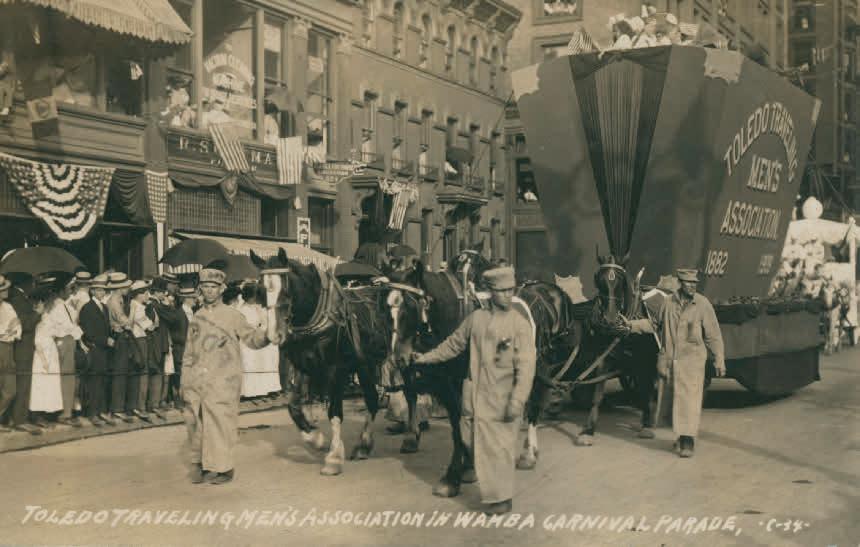
James M. Brown, a prominent Toledo lawyer, president of the local Humane Society and chair of the Home Comers Committee, introduced Dowd and sat down in the seat of the car Dowd was to speak from. As Dowd began his speech, Brown suddenly slumped down and couldn’t be revived. This sad occurrence marked the only dark moment in the week’s slate of activities.
That evening, some 60,000 spectators gathered to enjoy a grand auto parade, “the best auto exhibition
30 Echoes | JANUARY & FEBRUARY 2023
The Toledo Traveling Men’s Association float featured, appropriately, an oversized suitcase.
Toledo Lucas County Public Library
It all began with a callithumpian parade, followed by masked and costumed revelry throughout the downtown.
ever seen in Toledo,” as one person described it. Decorated autos competed in one of three categories: spectacular, artistic and grotesque.
Alfred Koch took the prize for the spectacular entry with his auto resembling a huge yellow butterfly with bright green eyes and waving wings, all seemingly driven by a little girl holding delicate white ribbons. The artistic entry represented a Japanese tea booth replete with Japanese lanterns and myriad flowers. The winner of the grotesque car featured a “Wild Man of Borneo” imprisoned in a rude cage. Word had it the judges had a difficult time picking a winner and runners-up for each of the three categories, given all the clever entries from which to choose.
THE GREAT PARADE
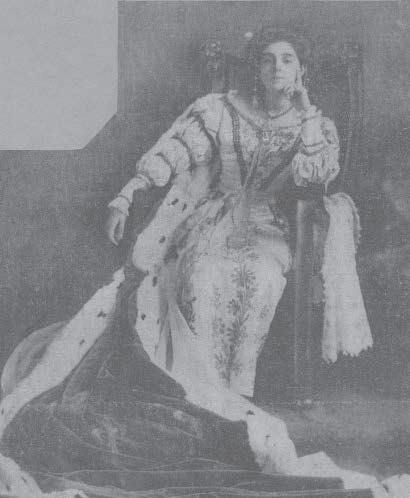
Thursday was a typical hot and muggy day for August in Toledo, but it was just right for the day’s events. Banks and factories all over northwest Ohio declared a half-day holiday, and the streets were flooded with visitors from neighboring towns and counties.
In midafternoon, the Great Parade began wending its way through downtown streets, across the Cherry Street Bridge to East Toledo and back again. Civic groups and local companies sponsored elaborately decorated floats, while fraternal organizations, military groups and veterans, the police band, the Modern Woodmen Drum Corps, the Scottish Society and Scotch Pipers and many other bands and groups marched to the delight of thousands of spectators.
Along the Maumee River that evening, the Venetian Night Boat Parade sailed up the river toward Maumee Bay, past downtown Toledo and back. Thousands of awed visitors lined the shore as the brightly lit and elaborately decorated yachts and sailboats glided by. Bands played music at nearby Riverside Park from 8 to 10 p.m.
Friday proved to be a perfect August day, at 85 degrees and sunny. In the morning, an official greeting between Spain and the U.S. occurred when the Marquis de Villalobar, Spain’s official representative to the carnival, boarded the gunboat Wolverine, which had been docked on the river for the week. He was welcomed by Capt. William White. The Marquis had been in attendance all week, but this visit was most important to him, for here he
met with Miss Chesbrough at his special request. Elsewhere, music played at Riverside Park all afternoon and evening. The Plaza was open and lively all day.
The King’s Carnival Parade was the highlight of the evening, “a pageant of gorgeous splendor” featuring 15 elaborate floats representing memories of childhood, such as Beauty and the Beast, Mother Goose, The Old Woman in the Shoe, Toy Land and Old King Cole, along with the last public appearance of King Wamba and Queen Sancha.
A GRAND SUCCESS
Toledo’s first attempt at a true Mardi Gras parade was a grand success, with one near-catastrophe averted. As the royal coach rounded one corner downtown, a supporting rod below gave way and an intrepid knight promptly crawled beneath to repair it; unfortunately, the torch he was carrying set the coach afire. An alert police captain patted out the flames and the knight’s burning costume with his bare hands.
OHIOHISTORY.ORG 31
Ethel Chesbrough of Toledo portrayed King Wamba’s Queen Sancha at the 1909 King Wamba Carnival.
Toledo Lucas County Public Library
By the end of the evening, the king and queen had had enough. According to a sidebar in the next day’s News-Bee, the pair were worn out from wearing heavy regal robes in high-80s weather. As they climbed out of their carriage after the parade to enter the Spanish Ball—entry strictly by invitation—the king asked a group of reporters, “Hey, fellows, have you got a cigarette?” His queen clearly disapproved, and no one offered the king a smoke. Sancha told them, “I am awfully glad that it is over. It has been a trying week.”
Saturday was dubbed the day of callithumpian fun, where from 2 p.m. to midnight anyone with a costume or mask and a special permit issued by A.L. Spitzer, commissioner general of the entire carnival, could “frolic on the downtown streets. Everything in the downtown section will belong to the revelers.” (Callithumpian is an Americanism associated with bands, parades, noise and boisterous fun.)
It all began with a callithumpian parade, followed by masked and costumed revelry throughout the downtown. The Daily News-Bee warned that “Carnival Etiquette Is Strict. It is traditional of festivals that all masks have free license and that any attempt at interference with the masquerader, either to interrupt his merry-making or learn his identity, is a gross breach of etiquette. Those who participate in the Callithumpian festival will be fully protected by the police. Don’t interfere with a mask!” Despite the numerous ways such a policy could lead to serious breaches of conduct on the part of the revelers, none was reported. A good time was had by all.
Police Chief Perry Knapp ensured that everyone would be safe throughout the week. His patrolmen all put in extra shifts, while 18 plainclothes detectives from Philadelphia, Pittsburgh, Milwaukee, Detroit, Cleveland and Columbus worked alongside Toledo detectives to patrol the many events, all sporting straw boaters or derbies and blending in with the crowd. Only one robbery was reported for the entire week, and as the newspaper reported, “the plunder was restored and the footpad is under arrest.” A total of 260 men and women were arrested during the carnival, and anyone with a police record was arrested and, after an interrogation, “escorted to the union or interurban station by detectives and deported.” Nearly 100 people were arrested and held for safekeeping, including “intoxicated persons,
old men and women who became lost and visitors who were suddenly taken ill.”
Reviews seemed unanimously in favor of the entire week’s events, and plans were to make it an annual occurrence. W.L. Wilner, president of the Chamber of Commerce, said, “The carnival, from every possible viewpoint, has been an unqualified success…and Toledo can, if she will, take her place among the foremost Mardi Gras cities of the world.”
But apparently she wouldn’t. A number of theories have been put forward, though no one can definitively explain why the King Wamba Carnival was a one-and-done event.
WAMBA AND SANCHA RETURN
As the years passed, many of the mansions of the titans of Toledo industry fell into disrepair and the once-fine neighborhoods became decrepit. But in the late 20th century, families began to rehab and move back into the beautiful Georgian, Edwardian and Arts and Crafts style homes in the area.

The district now known as the Old West End has become revitalized, and June marked the 49th Old West End Festival, a popular mainstay in the area. And after a 97-year hiatus, for the 35th annual Old West End Festival in 2006, King Wamba and Queen Sancha were crowned again.
That year, longtime neighborhood homeowner and event organizer Joyce Perrin and famous jazz composer and singer Jon Hendricks served as queen
32 Echoes | JANUARY & FEBRUARY 2023
History
| Echoes
Ohio
Connection
Magazine
and king. A new royal couple has been crowned at every festival since.
Organizers in 1909 had an ambitious and successful vision that took longer than they expected to take root. They’d be proud to see that their intentions have flourished so many years into the future.
Tom Harms taught high school English for 38 years at St. John’s Jesuit in Toledo. He enjoys reading, travel, music and spending time with his family.

LEARN MORE
LEARN MORE
For more about the Old West End’s King Wamba Parade, visit facebook.com/king.wambaparade.
The website Toledo, Ohio Early 1900s provides historical nuggets about the city including pieces on White City, Lake Erie Park and Casino, Walbridge Park, Toledo Beach and, of course, the King Wamba Carnival. Explore it at ohiohistory.org/DeeDale
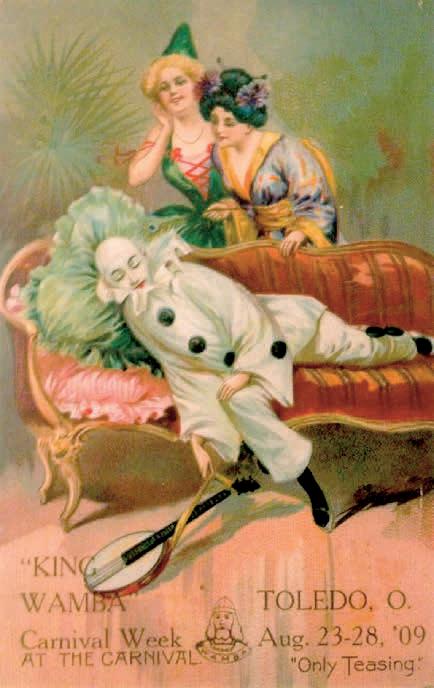
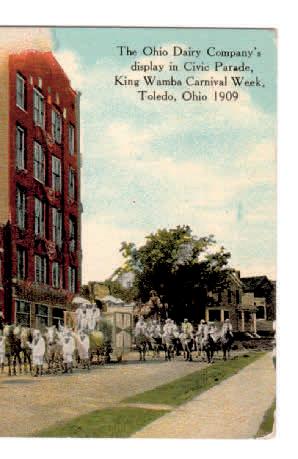
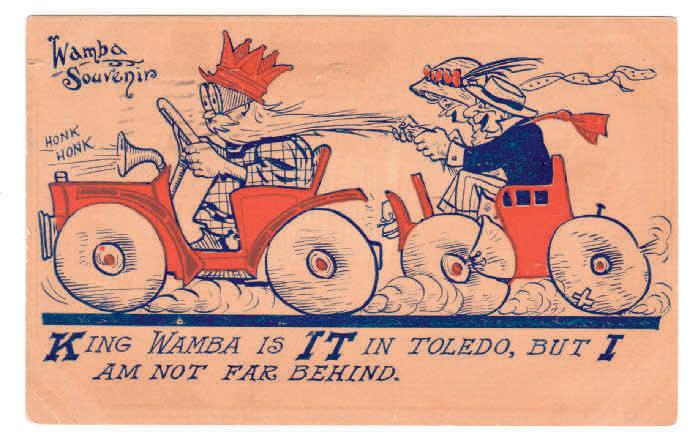
WATCH
Scan this QR code with your phone’s camera to watch a short Echoes Extras companion video and see more of Toledo’s 1909 King Wamba Carnival, “the Mardi Gras of the North.”
OHIOHISTORY.ORG 33
Ohio History Connection | Echoes Magazine
Ohio History Connection | Echoes Magazine
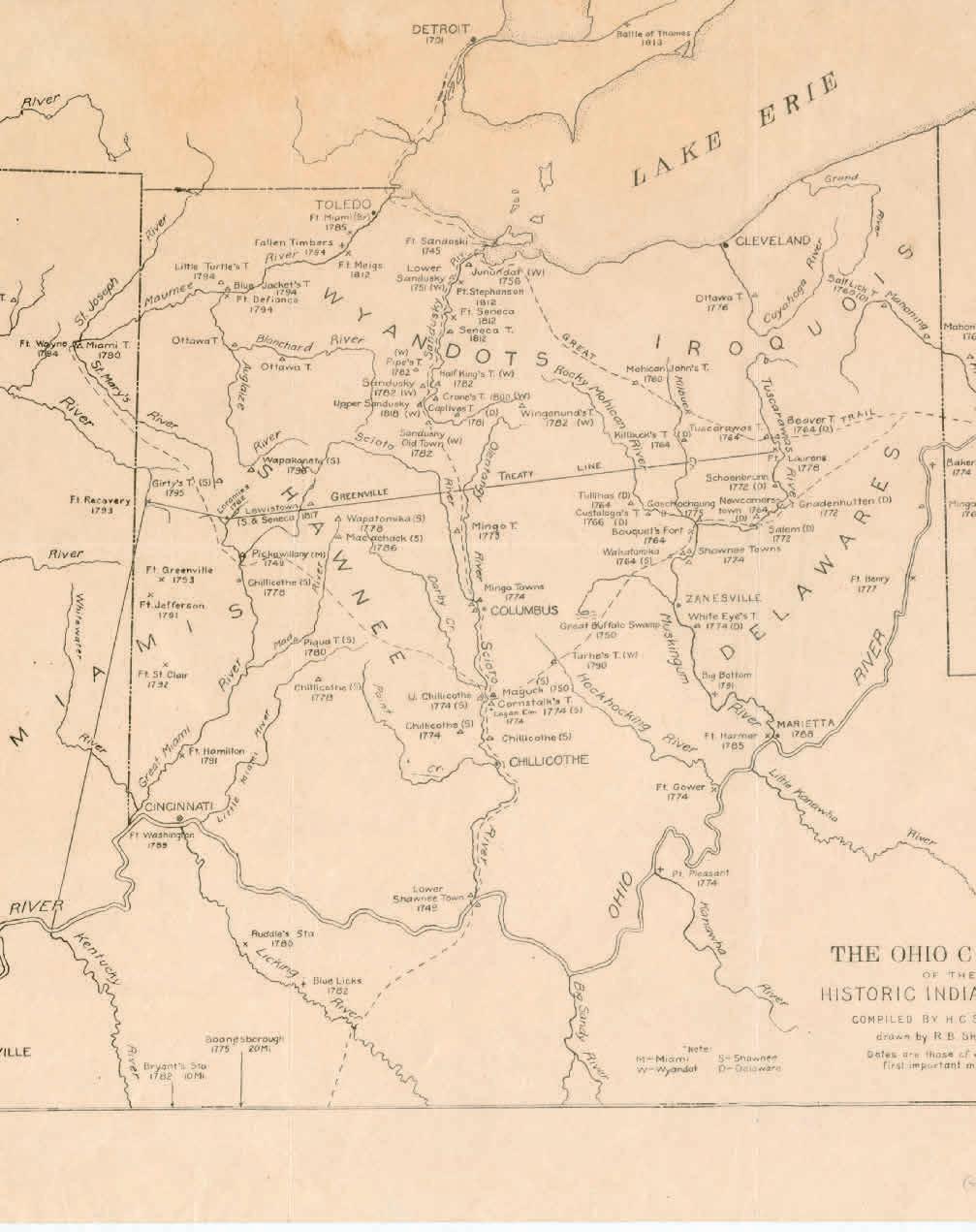


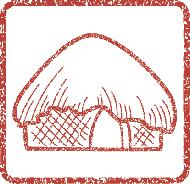


American Indian Sites in Ohio
THE OHIO HISTORY CONNECTION’S NEW VIRTUAL FIELD TRIP BY ERIN ESMONT
When Ohio State professor John N. Low was growing up, his family and community made sure he knew the history of his tribe, the Pokagon Band of Potawatomi Indians.
He learned about their skill as innovative farmers, canoe builders, basket weavers and bead workers. The Potawatomi, by 1679, had expanded throughout the Great Lakes region, settling along the Maumee River in what is now Ohio.

“I certainly didn’t get it from the K–12 experience,” Low says. Rather, his classroom exposure to American Indian history was brief, incomplete and often inaccurate. It wasn’t until he pursued a second bachelor’s degree in Indian studies that he learned about tribes beyond those in the Great Lakes region. A law degree and Ph.D. added to his knowledge, and over the years, he’s become a tribal elder and a well-known expert.
So when Teresa Valencia, the Ohio History Connection’s virtual field trips coordinator, asked Low to serve on an advisory committee for an interactive American Indian history project, he was all in.
So, too, was Diane Hunter, tribal historic preservation officer for the Miami tribe of Oklahoma, whose ancestral homeland is centered in northern Indiana but extends into western Ohio.
Hunter and Low (rhymes with now) welcome the chance to tell their history—in their own words—to Ohio schoolchildren.
VIRTUAL QUEST
They collaborated on the creation of Virtual Quest, an educational initiative meant to boost history content online during the pandemic and beyond, funded by a $1.2 million state grant. The first phase of the project resulted in the creation of a “virtual Ohio Village” with six new villagers along with a 3-D tour.
Left: Dated 1918, this map titled The Ohio Country of the Historic Indian Period was compiled by H.C. Shetrone and drawn by R.B. Sherman. The map includes geological features, regions occupied by various American Indian peoples, non-Native settlements and political forces governing the Ohio landscape, such as the Treaty of Greenville. Above: An American Indian from one of the seven tribes that fought at the 1791 Battle of the Wabash (also known as St. Clair’s Defeat), the worst loss in the history of the U.S. Army and a major victory for Native Americans.

Images courtesy of the Ohio History Connection and Ohio History Connection Archival Collections

OHIOHISTORY.ORG 35
The second phase focused on sharing American Indian history from an Indigenous point of view.
Users can click on an interactive map to learn about significant American Indian sites around the state, which brings up a menu of activities, a video on the history and a contemporary video that links that history to today.
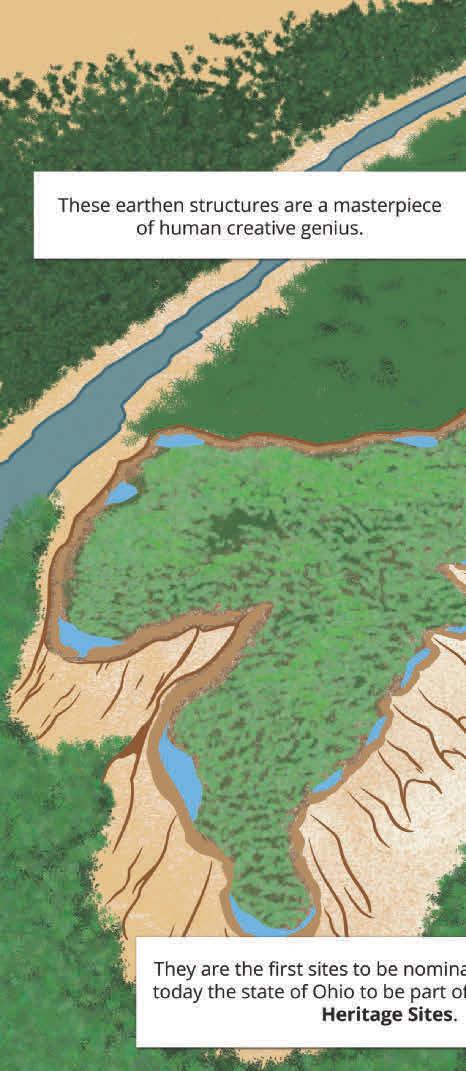
“Which is why this Virtual Quest program is so important,” Hunter says. “Because it really opens up more information about the history, about the places where that history took place in Ohio and introduces Native peoples as we are.
“They will see me as a Miami person, they will see the chief of the Eastern Shawnee tribe (Glenna J. Wallace), they will see John Low as a Pokagon Potawatomi. They will see people who are Native peoples, and still live and breathe, and are here to talk about who we are, as well as who we were.”
Valencia says the project strives to shift the narrative because so much of American Indian history is taught from a Eurocentric standpoint. “So this gives students a different insight into the meaning of these places, from the people whose ancestors created them.”
Other content includes a comic book that describes the Newark Earthworks, built by American Indians between A.D. 1 and A.D. 400 and heralded as a “masterpiece of human creative genius.” It’s been nominated to be part of UNESCO’s World Heritage Sites, which include the Egyptian Pyramids and the Great Wall of China.
Low says the largest set of geometric earthen enclosures in the world highlights the vast knowledge that the ancestors had in astronomy, geometry and advanced mathematics. He calls it an ancient example of STEM (Science, Technology, Engineering, Math) and STEAM (Science, Technology, Engineering, Arts, Math) in action. It served as part cathedral, part cemetery and part astronomical observatory—and is considered a sacred site.
“These were some extremely sophisticated people,” he says.
Students can click on the Fort Recovery icon to learn about the Battle of Wabash, more commonly known as St. Clair’s Defeat, which took place Nov. 4, 1791, and ranks as the American military’s largest defeat ever—by percentage of casualties— by Native Americans.
36 Echoes | JANUARY & FEBRUARY 2023
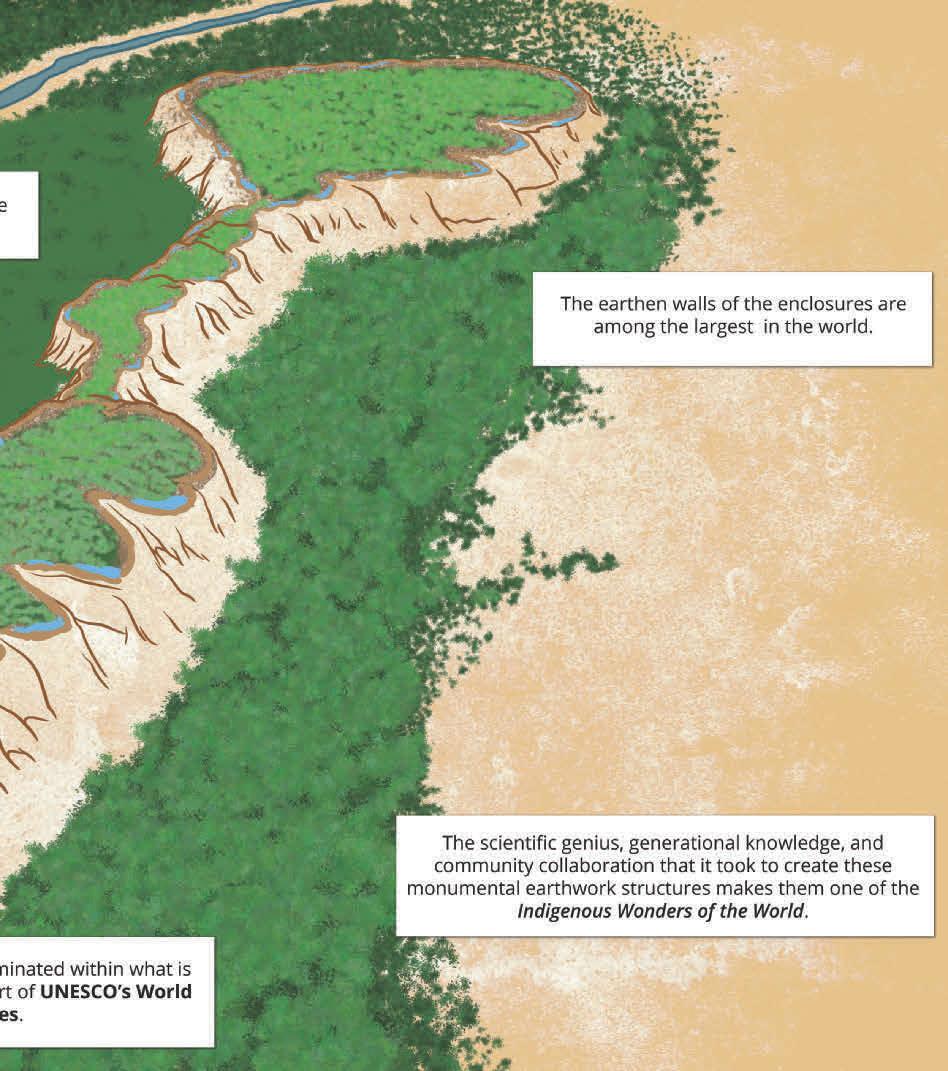
OHIOHISTORY.ORG 37
“When I was learning the history of St. Clair’s Defeat, I was amazed at the ingenious battle tactics and strategy that nine nations that did not speak the same language employed to defeat (General Arthur) St. Clair in about a 10-minute span of time,” Valencia says.
She says students aren’t taught about Indigenous people as skilled tacticians. More common stereotypes, such as the “noble savage,” persist. She’s counting on Virtual Quest to help change that narrative.
Before the Europeans came ashore, Ohio was an epicenter for Indigenous people, drawn by the climate and plentiful waterways, with an estimated 40-plus tribes living on the land that now makes up Ohio, Low says.
Today, none of those original tribes remains in Ohio. They were driven from the land by federal policies, including the 1830 Indian Removal Act, meant to relocate and eventually eradicate the population.
In the last few years, there’s been a push to reckon with these inhumane policies and such treatment.
In May 2022, the U.S. government issued its firstever report cataloging its brutal and, at times, deadly treatment of American Indian children forced to attend boarding schools, notably the flagship Carlisle Indian Industrial School in Carlisle, Pennsylvania, from 1879 through 1918.
The motto of founder Richard Henry Pratt was “Kill the Indian, save the man.” Staff cut off the children’s long hair and forbade them to use their native language or practice their faith. The children endured unspeakable abuse and worse, as evidenced by mass graves uncovered recently.
In the 1950s, the Indian Adoption Project resulted in one-quarter to one-third of American Indian children being forcibly taken from their homes and adopted into non-Indian families. The intergenerational trauma from these policies and practices reverberates today.
One of Virtual Quest’s learning goals is to help students understand the resiliency of the American Indian people despite acts of genocide and cultural oppression, Valencia says.
“The other is just as simple as knowing American Indian people exist and thrive today,” she says. “Just having students understand that, because there’s so much erasure of history when it comes to Indigenous history, especially.”
Erin Esmont is a freelance writer and editor. She’s worked at newspapers in Ohio and Pennsylvania. She lives in Columbus with her family.

LEARN MORE
LEARN MORE
Several websites feature American Indian “virtual field trips” including: National Geographic: ohiohistory.org/fieldtrip1 Denver Museum of Nature and Science: ohiohistory. org/fieldtrip2
Know Ohio: ohiohistory.org/fieldtrip3
The Ancient Ohio Trail website was developed as a guide for visitors to the principal remaining 2000-year-old earthworks and mounds built by Native Americans in what is now Ohio. Visit the website at ancientohiotrail.org
Teresa Valencia joined the Ohio History Connection staff in February 2021 as the virtual field trips coordinator and set to work creating content for a new, ambitious venture called Virtual Quest.
The first phase, the Ohio Village Virtual Quest, added six diverse online characters to Ohio Village, along with a 3-D tour and short, informational videos. The second phase, the American Indian Virtual Quest, explores and explains the history of the American Indians in Ohio and their rich presence today through interactive content and first-person narratives. The content is being made available to educators around the state. Intended for students in fourth through eighth grades, for a limited time Virtual Quest can be accessed by anyone at ohiohistory.org/ education/virtual-quest
In a recent interview with Echoes Magazine, Valencia talks about the new venture.
Echoes: How did you decide on the content for Virtual Quest?
TV: The reason we chose to focus on the material we focused on was based on conversations and evaluations with educators around designing more resources that they could share with students about Indigenous history, African American history, women’s history and the history of immigration.
38 Echoes | JANUARY & FEBRUARY 2023
Echoes: Who helped you create the content?
TV: For the American Indian Virtual Quest, I worked with representatives from tribal nations, and there was an advisory committee that weighed in throughout the process and is still helping with it. So, they were there from the very conceptual stages all the way through to implementation. (See accompanying story.)
And then, too, with the Ohio Village Virtual Quest, same thing—community partnerships, community stakeholders having a voice and a say in the content and how it’s crafted to make sure it’s accurate and respectful. The community collaboration, that’s the critical piece, because that’s what makes it enriching content for students and educators.
Echoes: What will Virtual Quest users experience?
In the American Indian Virtual Quest, users can click on an interactive map to learn about significant American Indian sites around the state, which brings up a menu of activities, a video on the history and a contemporary video that links that history to today. Students will hear firsthand accounts from tribal leaders and Indigenous people.
For the Ohio Village Virtual Quest, users can click on six online characters, learn about them and help them on their journey through the village. Two are Jewish people who recently immigrated to Ohio: Morrey Rosenberg, a tailor, and Abram Rosenberg, his teenage son. I worked with Toby Brief, executive director of the Columbus Jewish Historical Society, to develop their histories.
And then I created two African American characters: Helen Chapman and her niece, Ella Chapman. Helen Chapman is the Ohio Village midwife who works with Dr. Burton in the town. She wants to join the local social club but is denied membership. I worked with Miami University professor Dr. Marsha Robinson because we definitely wanted to talk about the racism and discrimination that existed in Ohio. Because it’s often misconstrued that it didn’t exist in the North, that that’s something that only happened in the Southern states. Marsha and I were thinking about Helen’s character journey, and we wanted to address that.
The two other characters are Eleanor Burton, a young white woman and activist who belongs to the local social club, and her brother, Benjamin, who works for the village newspaper, the Telegraphic Advertiser. They’re the children of Dr. and Mrs. Burton, who live in the village.
Benjamin is the Ohio Village newsboy. So, in his quest, he listens to what the villagers are talking about—the temperance movement, child labor, women’s suffrage— and the user gets to pick the next headline.
Echoes: How did the $1.2 million in funding come about for virtual programming?
TV: In late 2020, the Ohio History Connection received the Governor’s Emergency Education Relief (or GEER) funding. That was part of the federal Cares Act for creating virtual experiences due to COVID-19. Echoes: How did the pandemic accelerate these plans?
TV: I think that museums, including the Ohio History Center & Ohio Village, were starting to create virtual experiences prior to the pandemic. But when COVID-19 hit, it really pushed it to the forefront. And it was also a method of surviving, because so many museums closed during the pandemic due to visitors not being able to come in person.
Echoes: How are museums reckoning with a past that’s failed to fully represent the histories of marginalized communities?
TV: When I was doing my master’s program, which was in museum studies and business administration, I chose to write my thesis on the need for cultural competence in the museum field, especially in working with Indigenous communities. Early in my career, I worked at a museum that, at that time, had a bad relationship with Indigenous communities. I worked at many more museums that had excellent relationships with Indigenous communities. I wondered, ‘Why is the museum field split in this way, where there are some that are really good at it and some that are really bad at it?’ That was in 2016. Fastforward to 2022 and more museums are making efforts to increase their cultural competence and work toward addressing their colonial past and the way that they’ve harmed Indigenous communities.
Echoes: What’s your background and how did it influence your work with Virtual Quest?
TV: I studied anthropology at Ohio State and I focused specifically on cultural anthropology. My first few museum jobs involved working with Indigenous communities, combining my interest in learning about other cultures with my cultural anthropology background. I worked on Alcatraz for a number of years. I’m proud of my work with San Francisco State University and the local Indigenous community to showcase an exhibit called We Are Still Here, which talks about the protests that happened on Alcatraz from 1969 to 1971. I also had the honor to work at Iolani Palace in Honolulu, Hawaii, for five years, where I worked with the local community to create interpretive programs and exhibits, and respectfully curate the Hawaiian royal collection.
—Erin Esmont
OHIOHISTORY.ORG 39
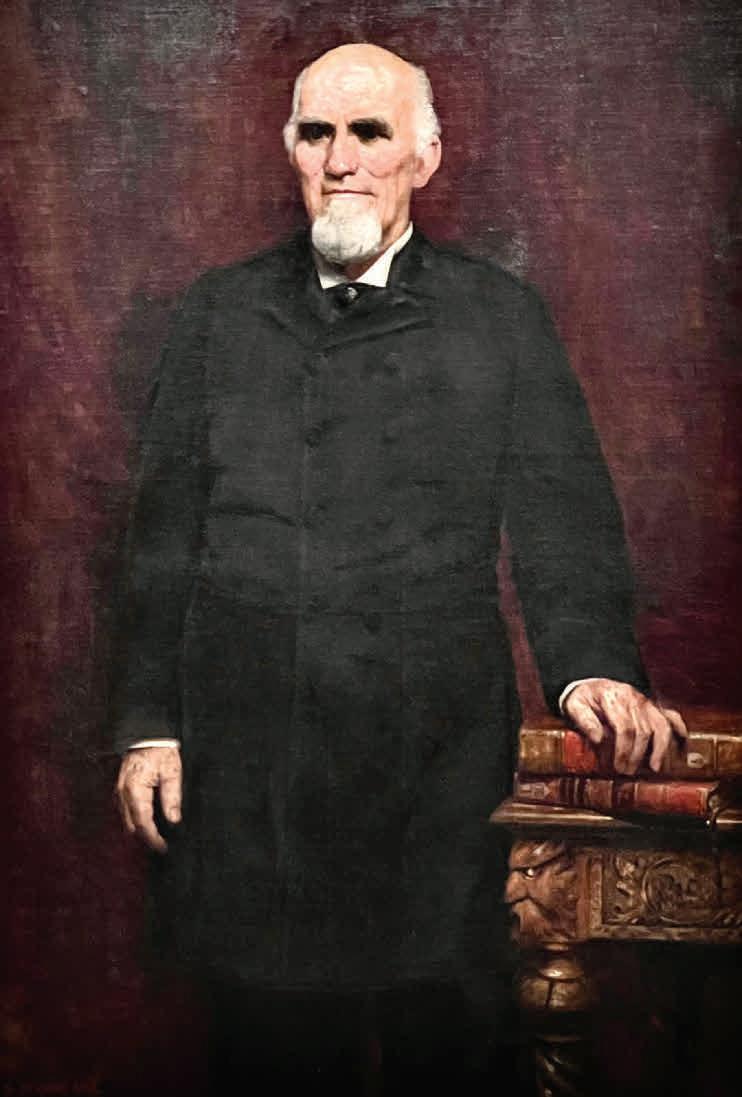
40 Echoes | JANUARY & FEBRUARY 2023
This portrait of Samuel Shellabarger is on display at Clark County Historical Society’s Heritage Center in downtown Springfield.
Clark County Historical Society | Shem Schutte, Photographer
Lawyer of the House
SAMUEL SHELLABARGER AND RECONSTRUCTION BY TOM STAFFORD
The colored race cannot now read because we have for centuries shut them from the light; they are poor because we have during these centuries stolen their property. You may forever in the future, as you have in the past, keep away from these people both knowledge and property, by keeping away from them the ballot.
—OHIO CONGRESSMAN SAMUEL SHELLABARGER, 1869
In his second inaugural address, Abraham Lincoln suggested a way the nation might get its arms and head around the gnarled riot of blood, gore, mud, grief and suffering it had experienced during nearly four years of civil war: That behind it all lay not so much the hand as the balled fist of an Almighty God smiting the nation for overindulging in the sin of slavery.
On that March 4, 1865—with the war still grinding on—Lincoln said: “Yet, if God wills that it continue until all the wealth piled by the bondsman’s 250 years of unrequited toil shall be sunk and until every drop of blood drawn with the lash shall be paid by another drawn with the sword, as was said 3,000 years ago so still it must be said ‘the judgments of the Lord are true and righteous altogether.’”
Five years later, as Congress approved the text of the 15th Amendment, Ohio Rep. Samuel Shellabarger despaired of finding a saving grace that might justify the enormity of the war’s cost in treasure and lives.
Through a language loophole that was wide enough and would last long enough to drive a segregated bus through, Shellabarger saw the coming suppression of the Black vote that would pave the way for the violence and oppression of the Jim Crow South.
In Samuel Shellabarger’s Civil War, 1817–1896, biographer and historian William A. Kinnison describes Shellabarger’s anguished apprehension. “How could it possibly be God’s will that the ignominious end of this drive for freedom and equality for African Americans should have come to pass? He did not understand it and wondered where believers should go now.”
FROM THE BACKWOODS TO WASHINGTON
Mud Run is a creek just west of Springfield, Ohio. To Easterners of 1817, it would have sounded like a remote frontier backwater someone had purposely sullied by dumping in wagonloads of dirt.
The odds that anyone born nearby would be a central player in resolving the great question the Founding Fathers had failed to resolve must have seemed about the same as the odds a backwoods lawyer from Springfield, Illinois, would be elected president.
OHIOHISTORY.ORG 41
Kinnison’s exhaustive research has unearthed gems like a neighbor’s description of the young Shellabarger, who “was not meant to plow, but to follow behind and smooth down the lumps.”
Shellabarger’s father was a landowner possessed of a rare frontier library and enough wealth to promise he would pay for his bookish son’s education—if the boy became a minister.
At Hanover College in Indiana, young Shellabarger found not a sanctuary for study but raging conflict over slavery and fierce divisions over religious orthodoxy. The two “would have torn the school apart,” Kinnison tells us, “if a tornado did not do so first.”
After that happened in the summer of 1837, Shellabarger finished his education at Miami University in Oxford, Ohio. But his abandonment of the ministry at the “Presbyterian of the West” created a neverresolved rift with his father.
“It was not just his son’s vocational decision that concerned his father,” Kinnison explains. “It was his tendency toward liberal theological views, his irritating modern speech…and his misguided conviction that the time for emancipation had arrived.”
STUDYING THE LAW
Shellabarger began reading the law in 1843 in Springfield, under four-term Whig U.S. Congressman Samson Mason. The understudy became “a rising young man of promise” in the party and won a seat in the state legislature. In the 1852 election, he “restrained his feelings and did his duty” by campaigning for presidential nominee Gen. Winfield Scott, Kinnison writes.
His loyalty couldn’t keep the national party’s divided house from falling apart. When the Whig Party collapsed, the author writes, “Shellabarger’s political career seemed finished at the young age of 34.”
But the Republican Party’s founding and growth during the slide into bloodshed offered new opportunities. And in the election that sent the unlikely Lincoln to the White House, Shellabarger claimed Ohio’s 8th Congressional District seat.
He wrote and spoke with what one supporter called a “stately diction” and drew a Columbus editor’s praise for having “cleared the political cobwebs from the minds of the audience” in a campaign speech supporting Lincoln.
The man who would later be called “the lawyer of the House (of Representatives)” began building that reputation by addressing two key issues in the 37th Congress.
• Because “the will of this whole people” had created the Union, he argued, “it cannot be overthrown…either by an act of secession or by an act of rebellion, or by any act less than the will of the people who made it.”
• Because slavery was allowed by the Constitution, any temporary emancipation during wartime could not be “within the province” of Congress but resided only within “the supreme command of the President,” who might declare it a military necessity in his role as commander in chief.
Lincoln announced the Preliminary Emancipation Proclamation on Sept. 22, 1862, just after Union forces battled Confederate forces to a draw at Antietam.
For Shellabarger, Kinnison notes, “it could not have come at a worse time.” The announcement ran in the papers the morning after Shellabarger assured voters that he and Lincoln agreed emancipation could be accomplished by Constitutional amendment alone.
Shellabarger lost by fewer than 300 votes to Samuel S. Cox, an opponent who pilloried “the Constitutionbreaking, law-defying Negro-loving Phariseeism of New England” Republicans.
BACK TO WASHINGTON
Swept back into office when Lincoln was re-elected in 1864, Shellabarger’s talent for “clearing political cobwebs from the minds of his audience” was displayed again.
After Lincoln’s assassination, he voted not to convict the impeached Andrew Johnson. The president may have been pro-Southern and corrupt, Shellabarger reasoned, but his misdeeds failed to meet the constitutional standard of “high crimes and misdemeanors.”
But Johnson’s enemies praised Shellabarger for pointing out that, because the Constitution gave Congress the power to determine whether states had suitably republican forms of government, Congress would be in charge of Reconstruction, not the president or the military.
Republican Speaker of the House James G. Blaine described Shellabarger’s remarks as “an argument which for closeness, compactness, consistency, and strength has rarely, if ever, been surpassed in Congress.”
In 1871, his skill and reputation as an advocate for the rights of people freed from slavery led President
42 Echoes | JANUARY & FEBRUARY 2023
Library of Congress
This caricature depicts Ulysses S. Grant on horseback carrying a U.S. flag labeled ‘Union equal rights’ and beheading Horatio Seymour, who is riding a horse labeled ‘K.K.K.’ Seymour opposed Reconstruction.
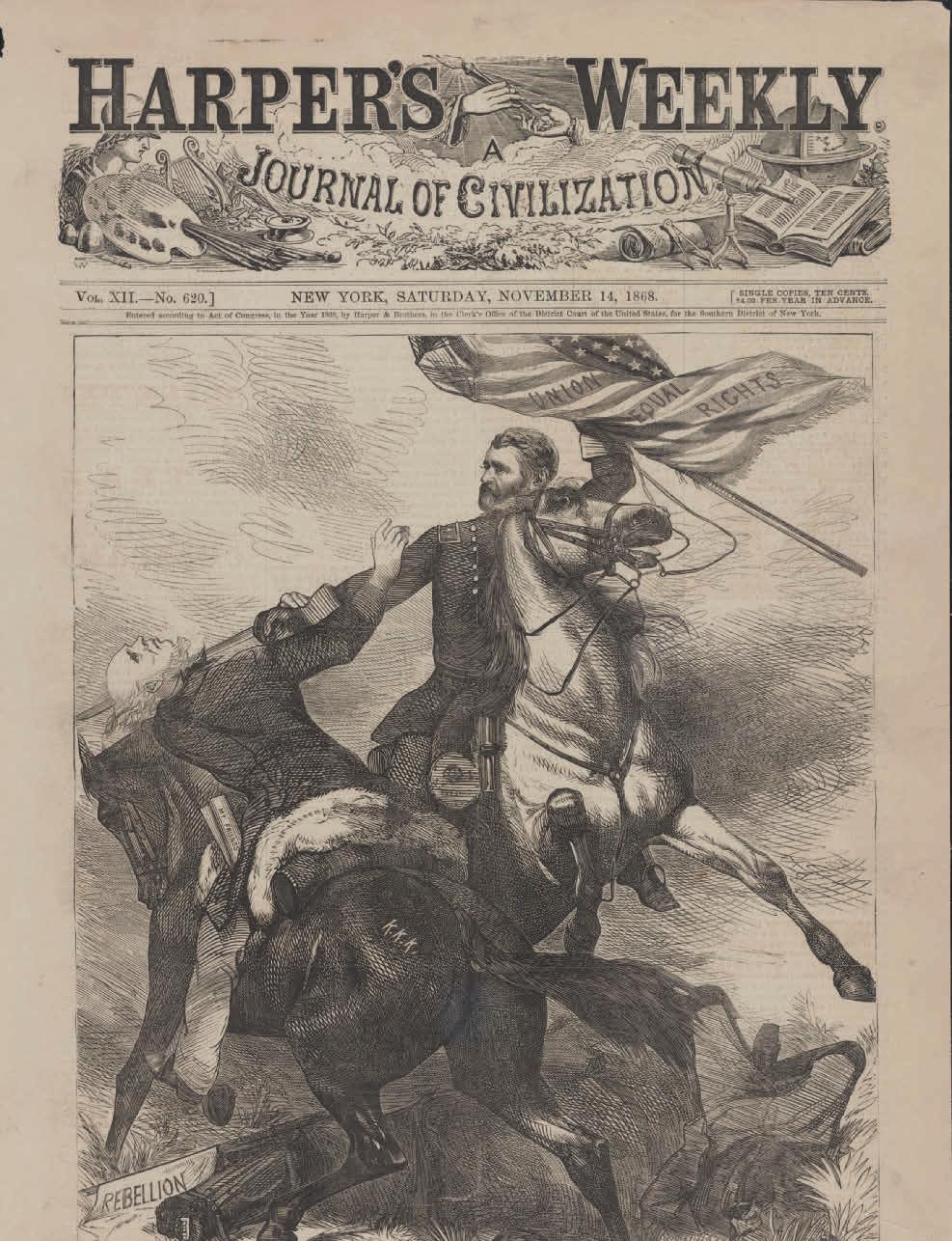
The Gilder Lehrman Institute of American History
The first page of Samuel Shellabarger’s speech on Reconstruction, delivered to the House of Representatives on Jan. 8, 1866.

44 Echoes | JANUARY & FEBRUARY 2023
Ulysses Grant to name Shellabarger the House manager of the anti-Ku Klux Klan Bill that would authorize the president to take military action against the Klan.
In a fiery speech supporting what later would be called the Civil Rights Act of 1871, Shellabarger accused the Klan of “murder by wholesale, murder by day and in the night time: the murder of men, and of women, and of the children…murder arranged and adjusted on a scale to overthrow the liberties of the emancipated now supposedly protected by the new amendments to the Constitution.”
Shellabarger sought to change the proposed 15th Amendment to read: “No state shall make or enforce any law which shall deny or abridge to any male citizen of the United States of the age of 21 years or over, and who is of sound mind, an equal vote at all elections.”
Called the Ohio Amendment and endorsed by the delegation 14-1, it was defeated 126-61, leaving undisturbed the loophole that allowed states to use poll taxes, literacy tests and property ownership requirements for those formerly enslaved.
“For him, this was the key issue,” Kinnison tells us. Shellabarger was aware that this failure meant voting rights “would not be achieved at all.”
CONTESTED ELECTION OF 1876
Upon leaving Congress, “the lawyer of the House” became a Washington lawyer and represented Rutherford B. Hayes in what his client called “the law case of all history”: the resolution of the contested 1876 presidential election.
Kinnison thoroughly tracks Shellabarger’s travels to Southern cities filled with riotous mobs whose violence led to fears of a rekindled war. He carried out strategic delays in court cases allowing electors to cast their votes, and roamed the halls of Congress to make sure his client wasn’t harmed by frantic political jockeying.
In the end, Hayes bested Democrat Samuel Tilden by a single electoral vote. But the so-called Compromise of 1876 ended Reconstruction and all hopes that people who had been freed from slavery in the South would gain any measure of equality beyond being unchained.
After the furious activity involved in what Kinnison calls “a wrenching of the national soul, and his own,” Shellabarger was left to ponder the dismal prospects of those freed from slavery in a nation he described as “not fit to be.”
Kinnison tells us the man who once had believed in the steady march of Providence began thinking of history as chaotic and unpredictable as an ocean.
“He wrote of prodigious currents ‘which sweep on and on, forever, unchecked and almost undisturbed by the momentous events that transpire momentarily on this globe’s vast surface. Events that were of brief importance disappear entirely, proving how ephemeral they were, leaving no trace, just an effervescence of bubbles that dissipate rapidly.’”
Among the primary movers, Shellabarger believed, was the “strong and defiant force” of human nature that, after the shining moment when the prospects of equality glinted like sun off a wave, drew it back into the depths—and along with it the nation Lincoln had envisioned in the Gettysburg Address and second inaugural address.
“He could not have foreseen that (the quest for equality) would be postponed for a century,” Kinnison writes, “but secretly, he feared it was lost forever.”
That being said, Shellabarger might have taken some solace had he known that, 100 years after the Emancipation Proclamation, a Black preacher from Georgia would stand at the Lincoln Memorial to resuscitate his own life’s dream.
Tom Stafford spent 35 years as a reporter at the Springfield News-Sun, 20 of those writing more than 1,000 local history stories for weekly publication. In retirement, he continues to write a Sunday column for the paper and does freelance reporting for WYSO in Yellow Springs.

LEARN MORE
LEARN MORE
If you’d like to know more about Ohio members of the House of Representatives, including Samuel Shellabarger, visit the website for the Biographical Dictionary of the United States Congress at bioguide. congress.gov
You can find a concise history of the Ku Klux Klan Act of 1871 at the website for the Congressional Record at ohiohistory.org/kkk
Historian Eric Foner’s germinal study, Reconstruction: America’s Unfinished Revolution, chronicles ‘the way in which Americans—Black and white—responded to the unprecedented changes unleashed by the Civil War and the end of slavery.”
First published in 1988, this modern classic was revised by the author in 2014.
OHIOHISTORY.ORG 45
I Wish I’d Been There
THE LURE OF LAKE ERIE BY JENNIFER BORESZ ENGELKING
There’s something about the lure of Lake Erie.
I’ve been drawn to it since I was a child, growing up along its shores in Willowick in western Lake County.
I remember going on bike rides with my parents along picturesque Cresthaven Drive, where glimpses of Lake Erie could be seen in the backyards of the suburban neighborhood. Along the route was a private beach club, the Willo-Beach Park Association, which had been the site of Willoughbeach Amusement Park in the late 1800s and early 1900s.
Fifty years before that, it was the location of one of the worst shipwrecks on the Great Lakes,
when the steamship G.P. Griffith mysteriously caught fire while carrying immigrants westward and ran aground on a sandbar, within sight of land.
The tragedy and levity that took place on this piece of land, its layers of secrets of what it once was, have always intrigued me.
I was an imaginative kid who read voraciously and dreamed of writing a book. My neighborhood’s rich history fueled my imagination into adulthood. Willoughbeach was the inspiration (and cover image) for my first book, Hidden History of Lake County, Ohio.
Through my research, I found photos, articles and advertisements that helped piece together the park’s story. The

more I discovered, the more I wished I could have experienced a visit to Willoughbeach.
THE PARK AT ITS PEAK
I would love to go back to a midsummer day, perhaps in 1917, when the park was at its peak, before the shoreline was developed. Electric appliances were being introduced to homes that had electricity (though many in small communities and rural areas didn’t), the automobile was on the rise and the roaring twenties were on the horizon.
I wish I’d been there on a July morning ... with the sun out and temperature quickly climbing, suggesting a stifling day ahead.
I would ride the Cleveland, Painesville & Eastern (CP&E) interurban electric railway along the Lake Shore line, away from the smog-filled air of the industrial city of Cleveland to Willoughbeach Amusement Park in the pristine countryside of Lake County.
The anticipation builds with each stop along the rail line, until finally ...
The park opens ahead as the interurban train pulls into the
46 Echoes | JANUARY & FEBRUARY 2023
Willoughby Historical Society
| Restoration by Ron Kotar of Studio K Photography
Willoughbeach loop turnaround. The blue water of Lake Erie is to the north. Farmland stretches out to the south, east and west. Visitors dressed in their finest clothes depart the train. Nearly everyone seems to be wearing a hat. Men wear broad ties, women wear long skirts, little girls have bows in their hair that are bigger than their heads and boys wear wide-brimmed or newsboy caps.
The breeze from the lake hits me as I begin walking down the path toward the hustle and bustle of the carousel, dance pavilion and popcorn and ice cream stands. I hear screams coming from the car coaster, the “Jack Rabbit,” as riders drive their cars up the track and allow gravity to pull them back down into a ravine and out again.
Children giggle as they compete in sack races across the lawn. An airplane looks as if it’s about to crash into the lake, but lands on water as smooth as glass, gliding across its surface, near the shore. Park-goers excitedly chat about their first time seeing a hydroplane. I hear the cheers of fans in the stands as Willoughbeach ball players take their places on the diamond and a baseball game begins.
AT WATER’S EDGE
I decide to walk down to the water’s edge, passing the carousel, where children fly by on colorful horses, and then the pavilions with pyramidshaped, russet-colored roofs offering shelter from the heat of the sun. I walk down the steps at the top of the hill, descending past sandy cliffs to the wide beach below, where people are crowded on the sand.
I wander off to find an old washed-up log, worn from the sun and relentless waves, that will make a suitable seat and I brush my long skirt off to the side. I watch as people venture into the chilly water in uncomfortablelooking wool bathing suits that cover most of their bodies.
It’s a summer day that seems to stretch on forever ... but as the day wears on, the sun sinks lower. The placid lake reflects the sherbet colors of sunset unfolding across the sky. Although lights flicker on throughout the park, the real show is unfolding down at the lake. Park-goers flock to the shoreline and stare in wonder, just as we do today, at the simple beauty of Lake Erie that transcends time and generations. Although history is often
marked by momentous discoveries or tragedies, sometimes our best glimpse into the past is through these simple moments that go by unnoted, yet are the most extraordinary.
Jennifer Boresz Engelking is a Lake County native and a Cleveland State University graduate. She’s the author of Lost Lake County, Ohio and Hidden History of Lake County, Ohio, and is currently writing her third book, Lost Lake Erie. Engelking has a background in print and broadcast journalism. She’s won several writing awards and been nominated for two regional Emmy awards. She lives in western Lake County with her husband and three children. For more information, visit JenniferBoresz.com.

LEARN MORE
LEARN MORE
Willoughbeach Amusement Park was built by the Cleveland, Painesville & Eastern interurban electric railway company to spur ridership on its trains. In his book Ohio’s Interurban Railroad History, 1884–1950s, Dan Rager takes readers on a chronological tour of the interurban rail system in Ohio from birth through demise, looking especially at the “trolley parks” built by the railroads to increase ridership. Read a general history of amusement parks in Stephen M. Silverman’s The Amusement Park, which is fittingly subtitled 900 Years of Thrills and Spills, and the Dreamers and Schemers Who Built Them. The book includes entries on Cleveland’s Euclid Beach Park and Sandusky’s Cedar Point.
Left: The Willoughbeach Amusement Park during the Perfection Spring Company’s outing on Aug. 11, 1917. The employees are posing in front of the Jack Rabbit coaster.
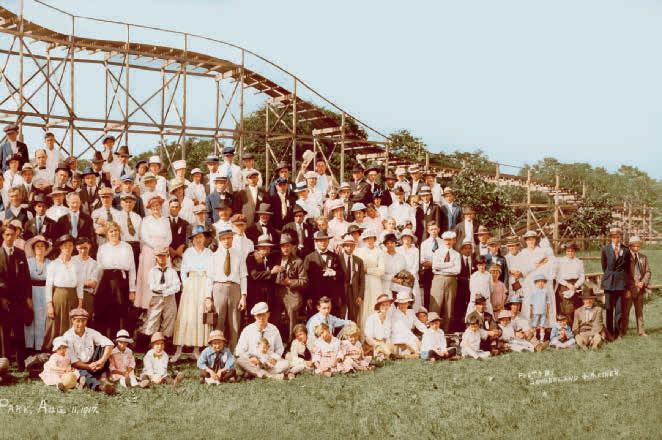
OHIOHISTORY.ORG 47
Young Eyes on the Past
THE LOVE CANAL CALAMITY BY JONAS CONN, ELLIE DEW AND JILLIAN NELSON
Imagine your child’s health suddenly declining. You have no idea what’s happening to your 7-year-old. You feel helpless. It started out as allergy symptoms but from there, his health gradually went downhill.
His life turned into frequent hospital visits, but none of them led to much improvement. He was diagnosed with nephrosis, a kidney disease, and began treatment. After months of deteriorating health, your son was suffering from visual hallucinations, had trouble breathing and couldn’t hold down food. He was rushed to the hospital and several days later died of cardiac arrest.
This was the real-life tragedy that struck Luella Kenny’s family.
In the years following their son’s death, Luella Kenny and her husband investigated the cause of his passing and found connections to the 21,000 tons of chemicals buried beneath their neighborhood. But that was only the beginning of neighborhood efforts at compensation, the subject of our History Day project with the theme Debate and Diplomacy.
CREATING THE CANAL
In the year 1834, railroad entrepreneur William T. Love started digging a canal in Niagara Falls, New York. The goal was to use hydroelectricity to power a new city, but Congress passed a law that prevented the project from continuing. The site was abandoned in the early 1900s and later was used to dispose of waste from the city and U.S. Army.
In 1942, the Hooker Chemical Co. bought the land and used it to dump its own waste, which consisted of 88 different toxic chemicals. The chemicals were stored in metal barrels, placed in the canal and covered with clay.
In 1953, the company was pressured to sell the land to the Niagara Falls Board of Education because of the city’s rapidly growing population. The city built a school above the site and houses adjacent to it, known as the Love Canal neighborhood. When construction took place, the metal barrels broke and released the chemicals, which began to seep into the basements and yards of Love Canal residents.
RESIDENTS TAKE ACTION
The homeowners started seeing an increase in health problems, such as birth defects, crib deaths and miscarriages. They brought this to the state government’s attention in the late 1970s, hoping it would provide aid and evacuate families in danger.
One important figure of the Love Canal story was Lois Gibbs, a resident who feared for the health of her community. Her children suffered from several medical issues that were linked to the chemical exposure. She came across a newspaper study in the Niagara Falls Gazette that brought attention to the health risks found in the area. In the newspaper, it was reported that the community wasn’t worth the money it would take to evacuate them.
The residents decided to take matters into their own hands by conducting a study to prove the chemicals were
the cause of the high number of health issues. Their findings showed that out of 900 families, 56% of the children were born with birth defects, and that out of 22 pregnant women, only four of them experienced normal births. They presented their findings to the state government, which subsequently conducted a study of its own. The results were the same, yet the government took no action to benefit the community, still refusing to admit the chemicals were the cause.
PROTESTS ARISE
Homeowners became angry with the government’s lack of concern and began protesting for their rights and for assistance in evacuating the area. Gibbs, eager for change, established the Love Canal Homeowners Association.
The association comprised more than 500 families who fought for relocation. The New York State Department of Health and Department of State only wanted to evacuate those at high risk— people living within a two-block radius of the canal—because of how much it would cost to move more residents.
On Aug. 7, 1978, President Jimmy Carter declared a national state of emergency for the people at high risk. Protests continued, some resulting in arrests. Eventually, the protests resulted in President Carter announcing a second federal emergency, after which all remaining families were relocated.
48 Echoes | JANUARY & FEBRUARY 2023
THE CLEANUP
The Comprehensive Environmental Response, Compensation and Liability Act, known as the Superfund, was created to clean communities that were impacted by chemical pollution and to hold accountable those responsible. Superfund has contributed to the cleaning process of 400 sites across the country and made it possible for the cleanup at Love Canal to begin.
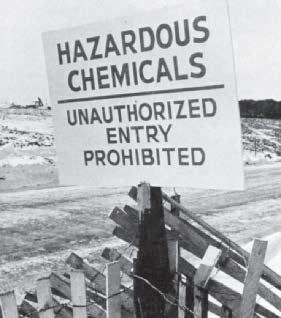
After 21 years and a $400 million expense, the Love Canal neighborhood was deemed habitable again. New houses were built north of the area and existing houses were either demolished or renovated, then sold to new residents at low prices.
The Kenny family was forever changed by the effects of the toxic waste dumped in Love Canal. The devastation that occurred in the community brought awareness of how dangerous chemical pollution can be. The Superfund Act has prevented other families from experiencing similar damaging health effects.
Jillian Nelson is a sophomore at Whetstone High School in Columbus. She’s a straight-A student and an athlete on her school’s softball and volleyball teams. Outside of school, she plays guitar and enjoys spending time with her family and friends.



Jonas Conn is a sophomore at Whetstone High School. He’s very active and plays baseball and golf for Whetstone. He loves science and analytics, which he believes is what made him interested in the Love Canal disaster. He spends a lot of time playing and watching sports, and aspires to become a radio or TV sports analyst.
Ellie Dew is a sophomore at Whetstone High School. She likes reading, sketching and spending time with family and friends. She plays the violin and is involved in her high school’s Key Club. She enjoys all her classes, especially math and literature. She would like to become a librarian or go into the medical field.
LEARN MORE
In the first chapter of her 1982 memoir, Love Canal: My Story, Lois Gibbs explains why she has taken pen to paper: “I want to tell you my story because I believe that ordinary citizens using the tools of dignity, self-respect, common sense, and perseverance can influence solutions to important problems in our society.” Gibbs’s book, originally published by the State University of New York Press, is readily available online new and used.
Gibbs is also the author of Love Canal and the Birth of the Environmental Health Movement (Island Press) and Dying from Dioxin: A Citizen’s Guide to Reclaiming Our Health and Rebuilding Democracy (South End Press).
Watch the 1979 ABC News documentary, The Killing Ground, at ohiohistory.org/superfund . The hour-long program, part of the network’s “Closeup” series of reports, written by Brit Hume, “portrays environmental and human health effects of toxic waste dumps in Niagara Falls and other locations.”
The Love Canal story still holds interest for readers and publishers. In April 2022, Pantheon Books released journalist Keith O’Brien’s Paradise Falls: The True Story of an Environmental Catastrophe, in which he “braids together previously unknown stories of Hooker Chemical’s deeds; the local newspaperman, scientists, and congressional staffer who tried to help; the city and state officials who didn’t; and the heroic women who stood up to corporate and governmental indifference.”
All images courtesy of the University Archives, University at Buffalo, The State University of New York.
Top: An older man and his dog sit on the front porch of his contaminated Love Canal home.
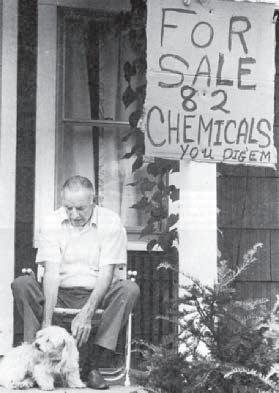
Bottom: Fenced-in area of the Love Canal with warning sign.
Young Eyes on the Past highlights work by Ohio students in grades 4–12 participating in regional, state and national History Day competitions organized annually by the Ohio History Connection and local sponsoring organizations statewide.
OHIOHISTORY.ORG 49
LEARN MORE
Reviews
BOOK
Shop our Ohio History Store in person at the Ohio History Center or online at ohiohistorystore.com for this title and more.
Death and Forgiveness: My Capital Punishment Witness by Alan Johnson


For 44 years, Alan Johnson was a newspaper journalist writing hundreds of thousands of words on a variety of subjects—he covered the Statehouse and state death penalty executions for The Columbus Dispatch always with the ultimate goal of objectivity. So Death and Forgiveness is a departure for Johnson, a personal chronicle of the 21 executions he witnessed from 1999, when the state resumed executions after a hiatus of more than 35 years, until his retirement from the Dispatch in 2017. In that time, Johnson covered nearly every one of Ohio’s 54 executions, witnessing 21 of them in person.
In the first chapter, Johnson writes about convicted rapist Eugene Gall, and, perhaps for the first time while writing on the subject of crime and punishment, uses the first person I: “When I entered the prison, the heavy steel-bar doors slammed loudly behind my back, startling me. I knew in my mind that I could get out, but this place was home to 2,000 convicted criminals. While I tried to convince myself I was safe, my blood chilled and I felt temporarily nervous.”
Johnson, working at the time for the Kettering-Oakwood Times, was interviewing Gall for a sidebar on a story about rape victims. Four years later, working at the Springfield NewsSun, Johnson learned that Gall had been released on shock probation and was now on trial for the rape and murder of Beth Ann Mote in a Dayton suburb. Gall had told Johnson that he liked to blindfold his victims. When her body was discovered, Mote, too, had a “mask-like outline” on her face. Had Johnson put the two things together—Gall’s initial confession four years earlier, and the fact that Mote appeared to have been masked—perhaps, he wonders, he could have prevented subsequent girls from being murdered by Gall. “It haunts me still,” he writes.
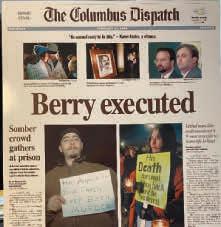
In Death and Forgiveness, Johnson writes about several of the executions he either covered or witnessed in person, including Wilford Berry—the so-called “Volunteer”— the prisoner who “began writing letters to public officials, including then-Ohio Attorney General Betty D. Montgomery, vehemently, sometimes graphically, saying he wanted to be executed.”
Johnson has an eye for the telling detail, honed over his 44 years in journalism. He recalls hearing Gall say that Beth Ann Mote recited the 23rd Psalm as she died,
and that her last words were “Tell my mother I’ll see her in heaven.” Over several pages he recounts the last meals and words of several of the men—they were all men—whose executions he covered. Some kept it modest: “Fish sandwich with hot sauce, Pepsi.” Others went to town: “Filet mignon with sautéed mushrooms, sweet potato pie with whipped cream, butter pecan ice cream, biscuits and gravy, French fries, broccoli with cheese, cherry cola, green lettuce salad with French dressing, collard greens, onion rings, fried chicken breast, corn bread.”
Death and Forgiveness is also Johnson’s personal journey from an agnostic when it came to the death penalty to his firm belief now that capital punishment is “logically, morally and spiritually wrong.”
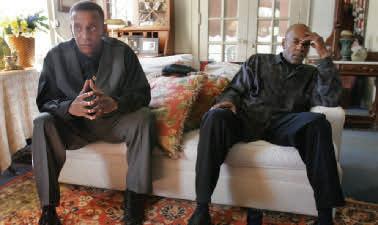
The most harrowing of the executions Johnson witnessed in person, that of Dennis McGuire for rape and murder, is generally considered a “botched execution,” with McGuire writhing and gasping for air for nearly 15 minutes, a “scene that tore away at my insides like none of the 19 executions preceding (it) did.”
—Bill Eichenberger, Echoes Magazine
50 Echoes | JANUARY & FEBRUARY 2023
Left: Subjects of the chapter “Wrongfully Convicted: Tim and Gary” in Death and Forgiveness, childhood friends Tim Howard (left) and Gary James spent nearly 25 years in prison after falsely being accused of robbing an Ohio National Bank in Columbus and murdering its security guard, Berne Davis. Middle: The Columbus Dispatch, Feb. 20, 1999. Right: The illustration An Eye for an Eye by Evangelia Philippidis.
The Columbus Dispatch
The Columbus Dispatch
Evangelia Philippidis
Near the Jackson County village of Leo in southeast Ohio is Leo Petroglyphs & Nature Preserve. A half-mile trail leads along sandstone cliffs and through a gorge with several small waterfalls.

Protected by a shelter house, a large, flat, sandstone slab features some of the most remarkable ancient American Indian rock art in Ohio, including drawings of humans, birds, a fish, a snake and other figures.
One of 50+ sites preserved by the Ohio History Connection (see page 15), it’s managed for the Ohio History Connection by Friends of Buckeye Furnace. Plan your visit at ohiohistory.org/leopetroglyph
Memory
Cleveland


HISTORY CONNECTION
E. 17th Ave.
OH 43211-2474
ADDRESS SERVICE REQUESTED NON-PROFIT ORG. U.S. POSTAGE PAID COLUMBUS, OH PERMIT No. 1157 SAT., FEB. 25 • 7–9 P.M. Members enjoy early admission at 6 p.m. See whether our exhibits really do come to life! ohiohistory.org/nightatmuseum Advance registration required.
OHIO
800
Columbus,
ohiohistory.org










 —Bill Baum, Milford Center
—Bill Baum, Milford Center








































 BY NEIL SNARR
BY NEIL SNARR







































